




DISABILITY REVIEW MAGAZINE ‘Starting the Conversation’ WINTER 2022/23 KATE DEAN Circus meets Cinema Being Human WRITING THE BOOKS WE NEEDED AS KIDS The Autism Friendly Cookbook here’s why Inclusive fashion is in style, INDEPENDENT LIVING: Friendship, travel & the Elizabeth Line RECIPES: Three Diabetes Friendly Winter Comfort Foods CONSIDER THIS: Disabled artists at the Micro Awards





Your Achievement Delivering personalised continuing professional development for the those within special education needs and disability community. Bringing together profiled presenters in their respective fields, to deliver informative awareness training sessions. To improve all educational professional’s with knowledge and deliver high understanding and ultimately and Empower Your achievement. Up to 70 live Webinars per year Over 200 past webinars Online awareness courses Accredited training courses www.sendgroup.co.uk SEND Group Membership Why not become a member and enjoy unlimited access to our past webinars as well as upcoming live webinars. From only £12.50 a month or £99 annually.
Empowering
Working in the world of special educational needs and disabilities is without doubt the most rewarding and fantastic job in the world but, at the same time, it can also be a bit of minefield!

The SEND Group are working with Beccie Hawes who has pulled together this mini guide that aims to provide you with lots of useful nuggets of information, which will save you time and will aid you and your colleagues in supporting the children, young people and families that you work with.

Printed Copy £12.99 inc P&P Digital Copy £9 The Things and The Stuff Order your copy today www.sendgroup.co.uk/send-guide
SEND
A handy ‘go to’ guide for all things
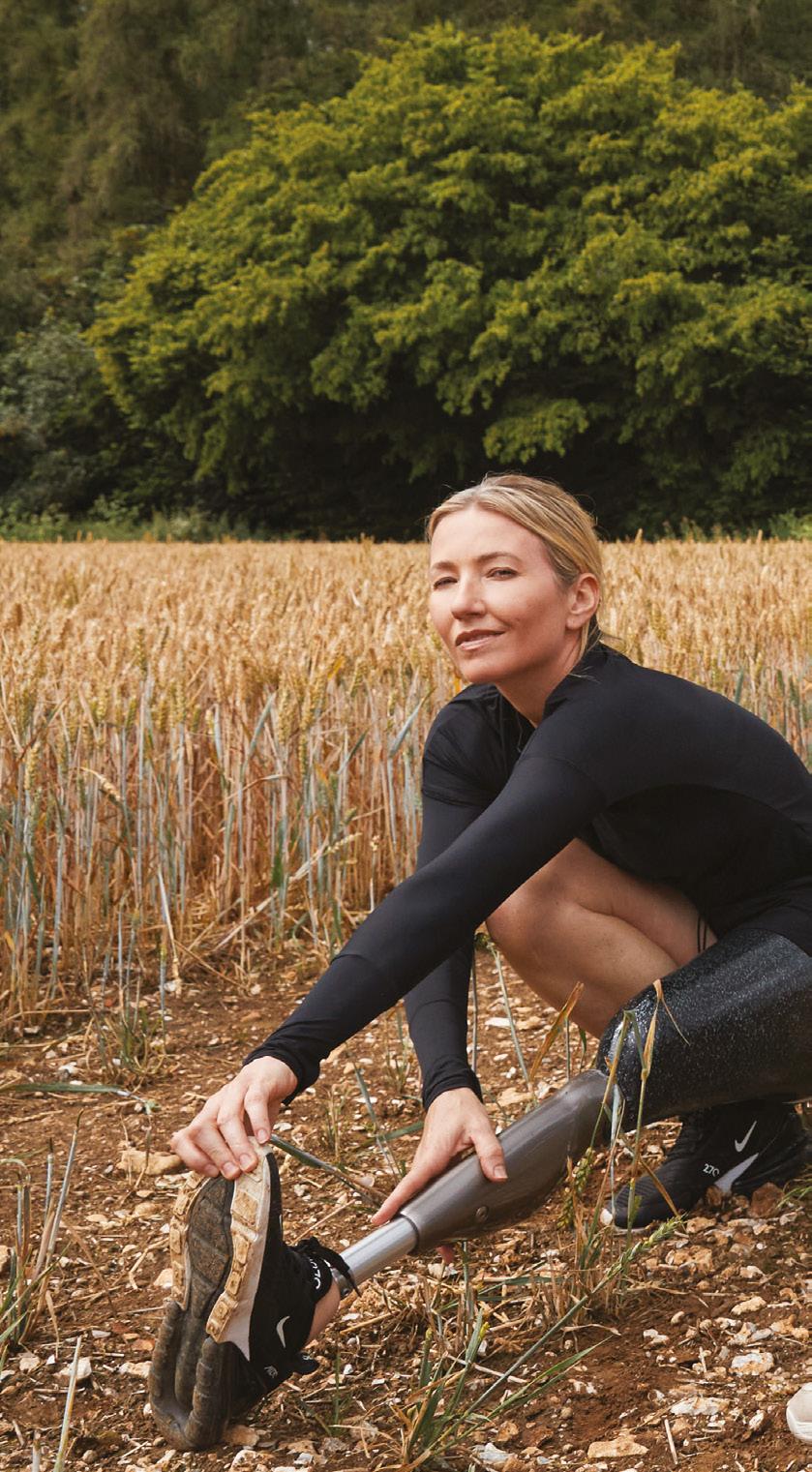
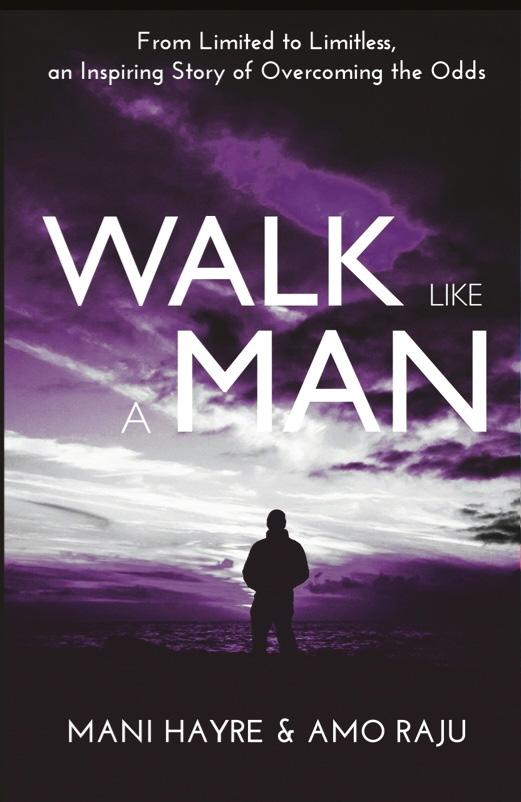


CONTE EMPLOYMENT AND EDUCATION 12 With Not For Check out the agency uplifting disabled employees 14 Kate Dean Exclusive interview with leading disability consultant Kate Dean on INDEPENDENT LIVING 20 Accessible Brussels? An exploration of Brussels from an access perspective 26 The robot revolution How robots are aiding independent living for disabled people 32 Removing Lines with Dr Amo Raju Dr Raju explores how his disability has shaped his life 34 Inclusive fashion is in style Featuring Chamiah Dewey, TubieLife and Ran By Nature TRAVEL, ARTS & LEISURE 40 Friendship, travel & the Elizabeth Line An exclusive review of accessibility on the new Elizabeth Line 44 Where next? Passenger Assistance and Pippa Stacey shows us how to rediscover travel alongside chronic illness 48 Being Human Circus meets cinema in this new show by Extraordinary Bodies at York Theatre 52 Writing The Books We Needed As Kids An exploration of disability representation in fiction 57 Unlimited opportunity Disabled artists at the Micro Awards 14 04 DRM MAGAZINE | Winter 2022 disabilityreviewmagazine.co.uk CONTENTS 60 32 Winter 2022
COVER CREDITS:



Disclaimer: Disability Review Magazine (DRM) is published bi-annually (twice per annum) by Seven Star Media Ltd. No part of DRM may be reproduced, stored in a retrieval system or transmitted to any form without permission. Views ex pressed in the magazine are not neces sarily those of Seven Star Media Ltd, and are included to provide advice only. No content is a substitute for professional medical advice. During printing, imag es may be subject to a 15% variation. © Copyright of content belongs to individu al contributors with the magazine copy right belonging to Seven Star Media. All rights reserved. Please either keep this magazine for future reference, pass it on for somebody else to read, or recycle it.

DISABILITY SPORT 60 Team BRIT The first all-disabled team attempting to take on Le Mans race 64 FIFA, Kayaking & Markets Is Qatar the most wheelchair friendly place in the Middle East? HEALTHY EATING 68 Three Diabetes Friendly Winter Comfort Foods Good food shouldn’t be limited because of a disability, argues Magdalena Sadowska 72 The Autism Friendly Cookbook Author and journalist Lydia Wilkins explores her new cookbook with us in an exclusive interview CONTENTS 05 Winter 2022 | DRM MAGAZINE disabilityreviewmagazine.co.uk 34 48 Executive Editor: Lee Gatland Art Director: Richard
Editor: Chloe
Hejsak Managing
Johnson chloe@sevenstarmedia.co.uk Sales Team: 01959 543 650 sales@sevenstarmedia.co.uk Published by SEVEN STAR MEDIA LTD 184 Main Road, Biggin Hill, Westerham, Kent Tel: 01959 543659 disabilityreviewmagazine.co.uk
Kate Dean
40 NTS


TOYOTA C-HR ICON SELF-CHARGING HYBRID £1,695 ADVANCE PAYMENT* *Model shown is C-HR Hybrid Icon (MY21) 1.8 VVT-i Auto at £1,695 Advance Payment. Subject to availability. Available as part of the Motability Contract Hire Scheme. Please note that a total of 60,000 miles over three years are allowed on the Motability Contract Hire Scheme. Offer valid between 1st October 2022 and 31st December 2022. Motability Scheme vehicles are leased to customers by Motability Operations Limited (Registered Company No.1373876), City Gate House, 22 Southwark Bridge Road, London, SE1 9HB. To qualify you must be in receipt of the Higher Rate Mobility Component of Disability Living Allowance (DLA), the Enhanced Rate Mobility Component of Personal Independence Payment (PIP), the War Pensioners’ Mobility Supplement (WPMS) or the Armed Forces Independence Payment (AFIP) and applications must be made with participating dealers between 1st October 2022 and 31st December 2022. Prices are correct at time of print, are subject to availability and may change. Official fuel consumption figures in mpg (1/100kkm): combined 53.3 (5.3) to 57.65 (4.9). Combined CO₂, 110 - 120 g/km. Figures are intended for comparability purposes; only compare fuel consumption and CO₂, figures with other cars tested to the same technical procedures. The fuel consumption and CO₂ produced under real life driving conditions will depend on a number of factors including the accessories fitted (post-registration), driving style, speed and vehicle load. All vehicles are certified according to the World Harmonised Light Vehicle Test Procedure (WLTP). CO₂ figures (and hence car tax and recommended ‘on the road’ prices) may differ from information printed before 1st April 2022, due to a change in the official method of calculation. Please visit www.vehicle-certification-agency.gov.uk/fcb/wltp.asp or contact your local Toyota Centre for more information. Smartphone Integration incl. Apple CarPlay and Android Auto Reversing Camera Pre-Collision Safety System with Pedestrian and Cyclist Detection Automatic High Beam Headlights
From the EDITOR
to ask, that shows you the positives that disabled people are creating, but also the experience of exclusion and discrimination that many face. That really shows the disability community in all its glory.
Having people that care is vital to any human experience, but having people care about disability when it can be hard to understand what you’re going through can be actually quite tricky. Disability is often discussed as a niche, when it’s 15% of the population; talked about as if it’s something scary, when, for many, it is a lived experience that can also bring joy and change as well as hardship. There are so many different facets to disability that having one doesn’t mean you will understand somebody else’s, and access needs can be varying and sometimes contradictory. When I took over the mantle of DRM (and what a mantle it is!), I wanted to help create a space that really cares, but also a space for this nuance. That asks the questions that people might not think
There is an interview with Kate Dean, who chatted to me about neurodiversity and the real push for businesses to try and be inclusive (and what that really means!), but there are also the difficulties of access found abroad in Brussels. We have reviews on fantastic theatre shows starring disabled circus performers, but we also have the cry for disability to be seen in multifaceted complexity in publishing. There is often so much information in the world that I often feel like it can be hard to find a semblance of peace throughout the noise. I hope to make Disability Review Magazine a place where you can find a little bit of that peace, something that makes you stop and think about the world we live in.
On that note, I’d like to say thank you to Liz, our previous editor, who provided me with a space to explore my creativity with this magazine – I’m always ever grateful for your insight and wisdom. Thank you to all the contributors, everyone who reached out and wished us luck with this issue and thank you to everyone who has a hand in making this beautiful project come together.

Chloe Johnson
WELCOME WELCOME 07 Winter 2022 | DRM MAGAZINE
disabilityreviewmagazine.co.uk
2
Dimensions launches new e-learning training for police force to tackle hate crime
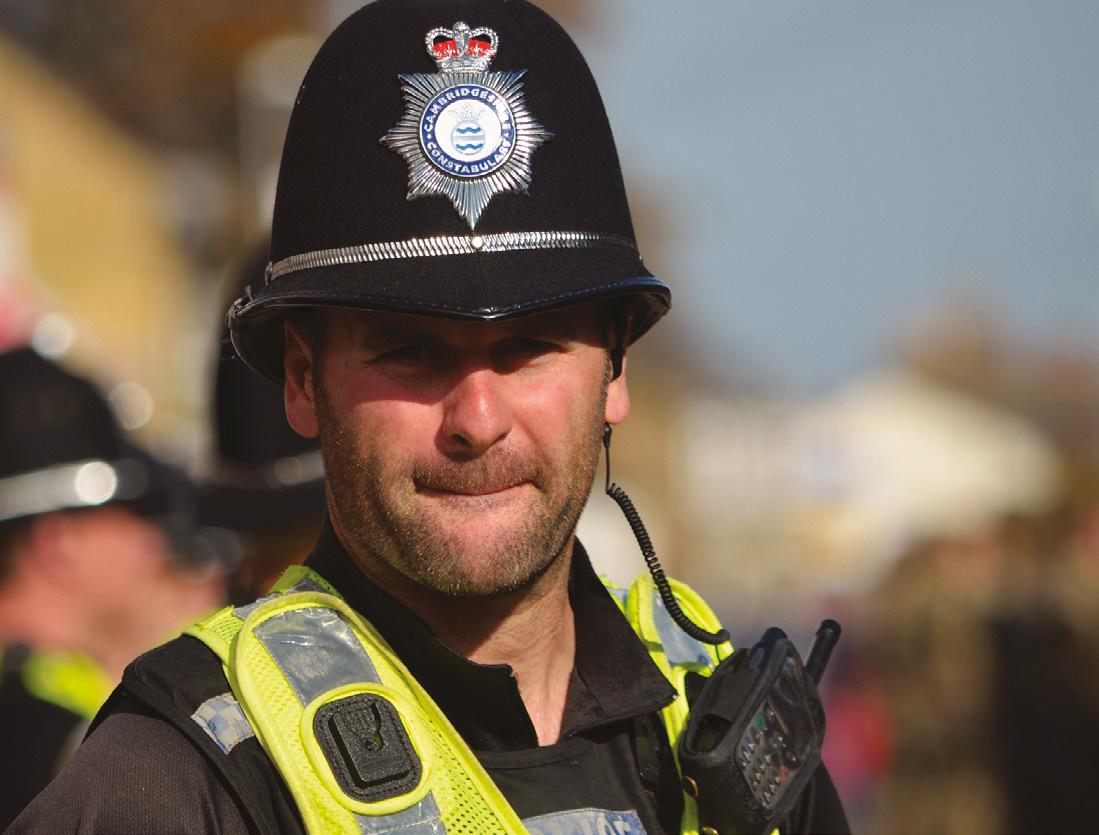
BEAT NEWS
Dimensions has launched its new e-learning training for the police force aimed at tackling the under-reporting of hate crime. The e-training comes at a pivotal time for those with learning disabilities as a survey by Dimensions outlines the continual challenges they face. When asked about their experience of hate crime, 82% of respondents revealed they had been verbally abused in person, while 34% had experienced this online. A further 44% said that they had been threatened, hurt, or coerced into doing things, and 34% said that they had been the victims of sexual abuse.
Debut author Laura Noakes announces Cosima Unfortunate Steals A Star


1Purple Tuesday aims to increase disability awareness
Purple Tuesday, a call to action for organisations to improve their customer experience for disabled people, continues its tradition of creating an accessible shopping day. Purple Tuesday worked with influencers Shani Dhanda and Isaac Harvey to bring about their message this year, which shows that the disability community is worth £274 billion in the UK if properly catered to.

Featuring a cast of disabled main characters, this heist kidlit novel, published by Harper Collins, is set to hit shelves in June 2023, following a multipublisher auction. This own voices representation is written by debut author Laura Noakes, a disabled writer and historian who has witten for Disability in Kidlit and Kettle Mag.

NEWS 08 DRM MAGAZINE | Winter 2022
3
disabilityreviewmagazine.co.uk
Singlehandedly, the debut book from inspirational speaker and diversity expert Ruth Rathblott, is a memoir, a self-help guide, and a call to action. Ruth Rathblott was born with a limb difference that she obsessively tried to hide from friends, employers, and even romantic partners for twenty-five years. In her new book, Rathblott unpacks her personal journey from shame and anxiety to confidence and authenticity.
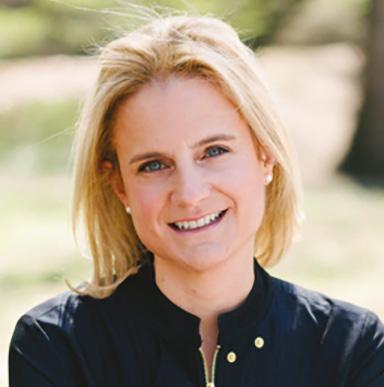
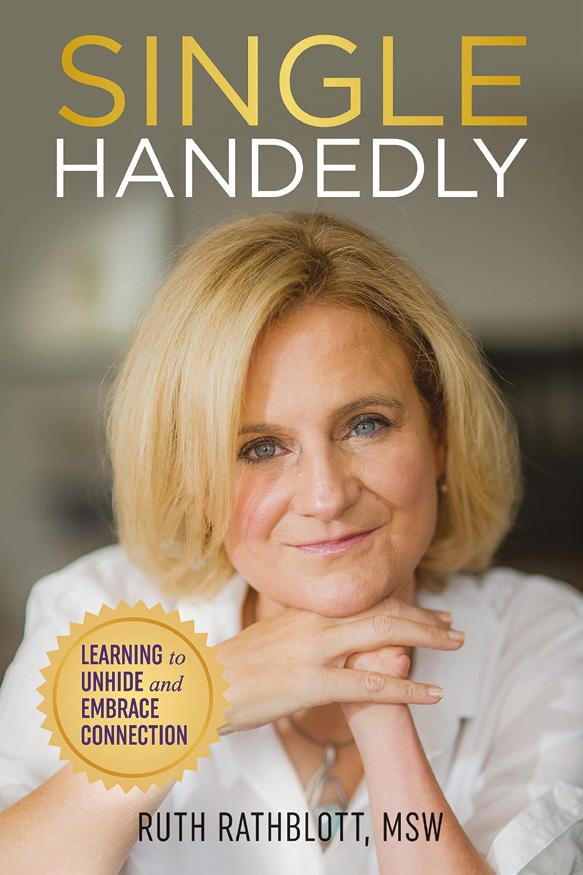
Hard-of-hearing sound engineer, Ethan Castro, creates “embodied audio” – a new, accessible way to feel audio
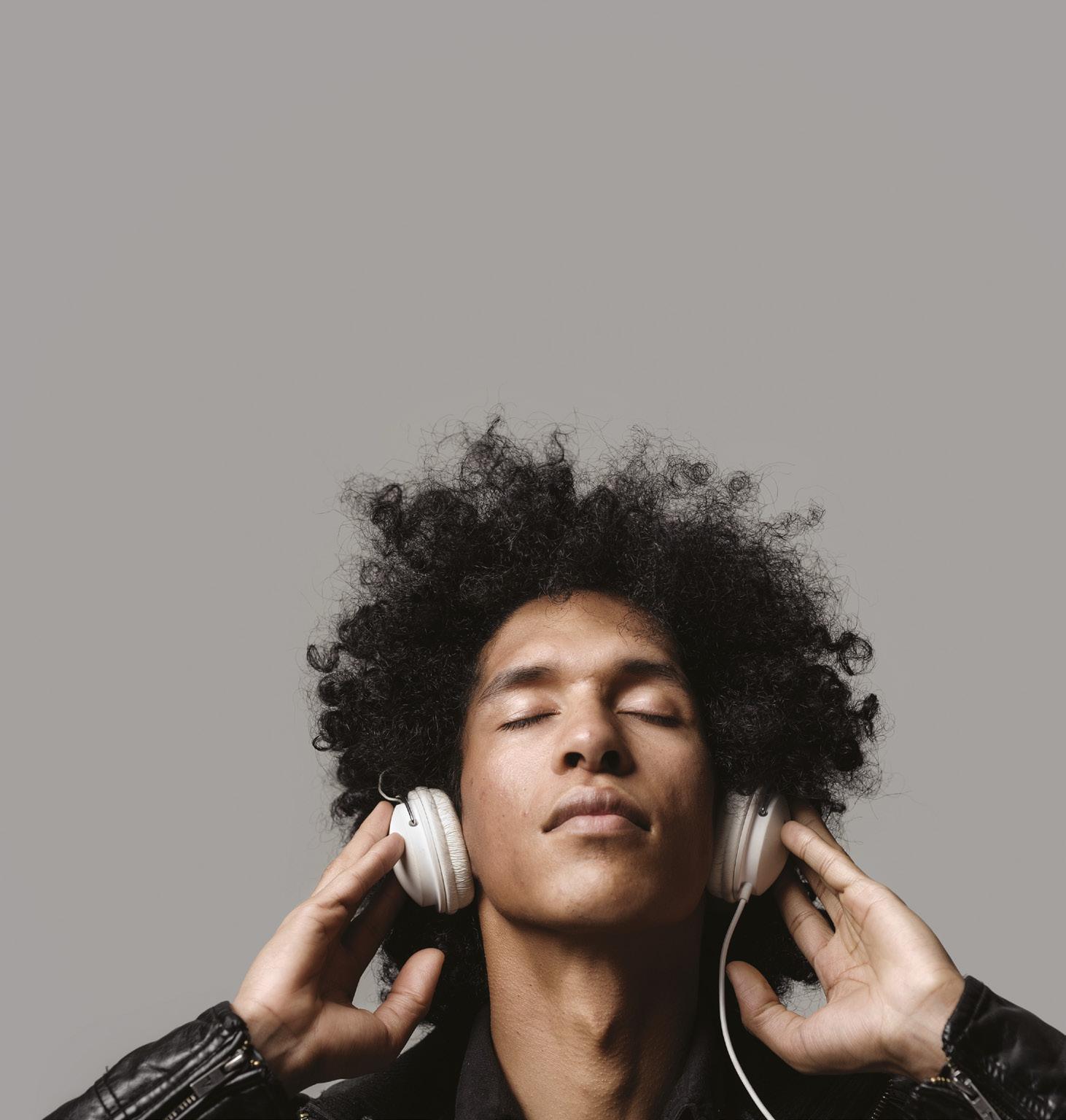
Inspired by founder Ethan Castro’s experiences as a hardof-hearing sound engineer, Castro has created EDGE’s ResonX technology which includes embodied audio combining the audible, tactile, and haptic frequencies of audio so you can feel everything you hear. Not only does this provide an accessible way to access sound, but it bridges the gap between accessibility and inclusivity, enhancing the experience for all regardless of ability. Ethan and his co-founder Val’s goal is to go beyond simply making an accessible experience to normalise the idea of inclusive experiences for anyone and everyone.
Voya Financial, Inc, celebrated National Disability Employment Awareness Month with their third annual virtual concert featuring America’s Got Talent finalist Mandy Harvey and
other disabled artists. The full band concert, which streamed via YouTube Oct. 20 at 7 p.m. ET, under-scores the contributions of people with disabilities in the workforce. The event, which was held at the famed Kennedy Centre in Washington, D.C., is a joint initiative between Voya and Disability:IN, a leading non-profit committed to workplace disability inclusion.

NEWS
5Is Disability Missing from Diversity? New Book Tackles Critical Issues of Inclusion, Authenticity, and Self-Discovery.
Voya and Disability:IN team up with America’s Got Talent finalist Mandy Harvey and other disabled artists in concert
6
4 09 disabilityreviewmagazine.co.uk
Making Things Possible With Custom-made Equipment
Remap custom-makes equipment to help people with disabilities to live more independent lives.
Remap is a charity that helps people with a disability achieve independence and a better quality of life by designing and making equipment for individual needs

Last year, we helped more than 3500 people, providing them with equipment free of charge in every case
We are a charity which has a network of skilled volunteers across the UK, who design and make bespoke items to help people enjoy life more.Custom made equipment can be designed and provided to help with the everyday tasks around the home, to help to increase mobility and enable people to do hobbies and sports
Here’s how we ’ ve helped just a small selection of people in different ways:
Unleashing Michael’s Creativity
Michael discovered his love of art when studying at college He quickly found that his passion lied with painting, but he wanted just a little more independence and to not have to rely on those around him to bring his ideas to life
For Michael, being able to paint independently was his goal Michael is unable to talk, so painting is his way of communicating and expressing himself When he reached out to Remap, our volunteers adapted a helmet which enabled him to change paint brushes with ease, helping Michael to have more control of his paintings and improve his skill.
Michael shares his thoughts on what its like being able to bring
his ideas to life now, with the help of custom made equipment:
“I found painting so much easier, I’ve got more independence and can create pieces myself without too much help.”
Helping Ava confidently ride her bike for the first time... Ava’s family approached their local Remap group to see if our volunteers could adapt her bike so that she could ride more confidently and safely
Our volunteers worked with Ava to produce a handlebar that was smaller and closer to her body, allowing her to support her hand on the bar whilst riding Ava is now able to ride her bike for the first time and mum
Michael with his painting adaptation
How to get our help...
How to get our help...
When you contact us we will ask you for a few details about what you need, to assess whether we can help you If some equipment that would help you already exists, we will encourage you to buy that Our help is for situations where there is nothing commercially available that is suitable
When you contact us we will ask you for a few details about what you need, to assess whether we can help you. If some equipment that would help you already exists, we will encourage you to buy that Our help is for situations where there is nothing commercially available that is suitable
K t “ d
Before we had the bike adapted, Ava found it difficult to hold the handlebars and sit on the seat safely Its amazing to see her smiling and enjoying riding her bike ”
K t “ done is amazing, she really loves it Before we had the bike adapted, Ava found it difficult to hold the handlebars and sit on the seat safely Its amazing to see her smiling and enjoying riding her bike ”

Kirandeep’s book manipulation aid
book manipulation aid
Kirandeep’s
Due to reduced motor impairment of her hands and fingers, tasks for Kirandeep had become increasingly harder, especially reading.
Due to reduced motor impairment of her hands and fingers, tasks for Kirandeep had become increasingly harder, especially reading.
With a love for reading, Kirandeep had been having difficulty grasping and turning pages of any chosen book
With a love for reading, Kirandeep had been having difficulty grasping and turning pages of any chosen book
A Book manipulation aid was made by her local Remap group which could hold an adult paperback book with up to 500 pages
Ultimately it enables Kirandeep to easily turn each page, either backwards or forwards, without losing control of a book
A Book manipulation aid was made by her local Remap group which could hold an adult paperback book with up to 500 pages Ultimately it enables Kirandeep to easily turn each page, either backwards or forwards, without losing control of a book

experiencing the magic that reading can bring
in other worlds again, experiencing the magic that reading can bring
Would you or someone you know benefit from custom made equipment? Find out how to get our help online at www remap org uk
Would you or someone you know benefit from custom made equipment? Find out how to get our help online at www remap org uk
If we think we can help, a volunteer from your nearest group will visit you at your home to discuss your situation and understand what you need We like to have an occupational therapist there too. Following that, we will design and make a piece of equipment specifically for you, in a way that meets your needs. Sometimes we will modify existing equipment to make it more suitable for you.
If we think we can help, a volunteer from your nearest group will visit you at your home to discuss your situation and understand what you need We like to have an occupational therapist there too. Following that, we will design and make a piece of equipment specifically for you, in a way that meets your needs. Sometimes we will modify existing equipment to make it more suitable for you.
rest therapist too.
We make no charge for the devices we make and each item is made for an individual person, we do not carry out repairs to items
We make no charge for the devices we make and each item is made for an individual person, we do not carry out repairs to items
Make a referral online at www.remap.org.uk/can
 Kirandeep with her book reading aid
Kirandeep with her book reading aid
we-help-you/
Make a referral online at www.remap.org.uk/can we-help-you/
Kirandeep with her book reading aid
smiling enjoying riding ” book. forwards, tion
For many disabled people, work can be incredibly inaccessible. From managers not understanding accommodations, to the job applications themselves, disabled employees can find themselves stuck with inaccessible work or no work at all.
With Not For are the agency that are imagining a future where employers are actively seeking to engage with disabled employees, seeing the merits and creativity this can bring. They have a curated database of Disabled creative talent, from photographers to illustrators, as well as offering disability inclusion content, research workshops and DE&I consultancy.
Disability Review Magazine caught up with Kelly Gordon, co-founder of With Not For, about the company.
With Not For was founded from an assortment of lockdown conversations between my co-founder Emma Gardner and me. We would often talk about shared experiences, the difficulties I had in finding work and the way disabled people are often seen to not want to work or have the skills to work! We spoke of friends and colleagues that we would love to add to our roster, as well as potential clients at big ad agencies and corporations that we wanted to collaborate with - we decided that there was no time like the present.

12 DRM MAGAZINE | Winter 2022 EMPLOYMENT & EDUCATION
Where did the idea for WNF come from?
With Not For started from a conversation in lockdown – why aren’t companies employing disabled people? Now, they’re helping disabled creatives land jobs, and advocate for themselves.
disabilityreviewmagazine.co.uk
WITH NOT FOR –THE AGENCY CONNECTING DISABLED EMPLOYEES EMPLOYMENT
getting to know people and helping them on their inclusion journey.
the important stories of disabled people and giving those voices the platform that they deserve.

What are your values as a company?

When I think about our brand values, I would certainly say that we are here to enhance not only the careers but the lives of our candidates by offering them support to gain access to new careers, advocating for their needs and showcasing their skills to our clients. We also ensure that we have a firm but fair approach with the brands and clients that we work with, giving them honest feedback about their work, language, and attitude towards the disabled community. We believe that our work is important, and we would much rather ensure that our clients are well educated and that their work is valid and not just “ticking a box” than take money for a job that we don’t believe in or that doesn’t fit with our ethos. We will always be that way.
How would you encourage disabled employees to advocate for themselves?
We noticed in lockdown the landscape was shifting slightly and that working from home and flexible working was being not only accepted but encouraged during and post the pandemic. Our plan was to build a bank of disabled talent, and fill the roles within companies with amazing, proactive, super talented, disabled people.
We have just added some new services at WNF! Research groups which are an online meeting or focus group for brands that want to run an idea/product/ service past the disabled community. We have so many fantastic candidates that login and share their lived experience with our clients and give such personal and valuable knowledge, it is really interesting to see just how much value our candidates add and to see the client’s perspective change pre and post call. We have also added content creation. I particularly enjoy making and writing films and content delving into the root of the “disabled experience”, and we are looking for even more brands to commission our film content, telling
It can be hard to advocate for yourself, especially if you don’t have much prior experience. I think as cliche as it sounds disabled employees should go with their gut. If you think something is unfair or unjust, then do speak up. Oftentimes there is a lack of communication or a miscommunication that can be solved by addressing this directly. If you feel that this is difficult to do then seek help from a friend, family member, colleague or even a company like ours, we are always on hand to support anyone that needs our help.
If you would like to find out more information about With Not For, see their website at withnotfor.co.uk
It has actually been quite refreshing! Obviously, we still have a long way to go when it comes to levelling the playing field but many companies have accepted us with open arms. Something that we are seeing a lot of is that people are wanting to work on projects about disability and 99% of the time they are understanding that to make a project, product, or service for disabled people you really need to ask disabled people. So, we have had a great time (especially as our other clients have been spreading the word)
EMPLOYMENT & EDUCATION: 13 Winter 2022 | DRM MAGAZINE
What work are you really excited to do more of with WNF in the future?
What have you noticed from businesses when trying to approach them about equality?
Our plan was to build a bank of disabled talent, and fill the roles within companies with amazing, proactive, super talented, disabled people.
i
disabilityreviewmagazine.co.uk
We would much rather ensure that our clients are well educated and that their work is valid and not just “ticking a box” than take money for a job that we don’t believe in or that doesn’t fit with our ethos. We will always be that way.
STARTING KATE DEAN the Conversation
Disability Review Magazine caught up with Kate Dean, the Director of Enable Disability & Inclusion Consultants Ltd, to discuss her career, equality, and how including disabled people in the work-place is integral.

EMPLOYMENT & EDUCATION 14 DRM MAGAZINE | Winter 2022
disabilityreviewmagazine.co.uk
Kate has a sunny disposition that immediately warms a room, even a Zoom room –and, in fact, we stray off topic to discuss her dog before settling into the matter at hand, which leads to us discovering we’re both neurodivergent.
“I’m neurodivergent so I’m a natural problem solver and I’m passionate about what I do.” Kate explains, of her work as director at Enable Disability & Inclusion Consultants, and, somehow, we’ve come full circle back to the topic at hand. It’s a minutiae character study into how fitting around our access needs, in this case making sure there’s freedom for creative tangents as well as a clear agenda, culminates in the best possible working environment.

“People are at best apprehensive, at worst terrified of sharing their disability with their employer for fear of being treated differently or not getting the job or promotion.” Kate explains, when asked what businesses should be trying to learn about disability inclusion. Her business identifies adjustments, technology, and strategies that businesses and people can use to work to their strengths, as well as removing barriers and embedding inclusion for disabled employees through consultancy work. Kate has noticed a huge appetite for disability inclusion. “There is an ever growing and compounding evidence base that if we create inclusive workplaces, people will want to work for those organisations, will be at
their best and will stay. There is a win for employer and individual alike.”
But what would this look like? Kate is clear that the way forward for businesses is in embracing the change that has happened over the last few years.
“The last couple of years have offered us such an opportunity to reshape the workplace, from working hours to the physical environment.” Kate comments. “Before the pandemic, working from home was the most refused request for a reasonable adjustment, until the world had to make it work. Now workplaces are trialling hybrid working, it is a really good time to enable team members to find something that works for them. Flexible working times and locations can make a big difference to lots of people. It allows them to be at their best at work, and have some energy left over to enjoy their nonwork time. There are so many opportunities to create inclusion, often these are straightforward solutions and quick wins that businesses can implement that make the world of difference to their team members. Helping us to move away from a deficit model of understanding disability to a strengths-based one where people can be unapologetically them is something that motivates and excites me every day.”
She’s confident that the appetite for disability inclusion is already growing, telling Disability Review magazine: “Many larger organisations are really starting to think about how they can harness the strengths of their disabled employees but, often, they just don’t know how.


EMPLOYMENT & EDUCATION 15 Winter 2022 | DRM MAGAZINE
disabilityreviewmagazine.co.uk
People are at best apprehensive, at worst terrified, of sharing their disability with their employer for fear of being treated differently.
There is definitely a broadening of awareness around disability, and recognition that we need to think more about neurodiversity and unseen or hidden disabilities.”
“Just as we’ve recognised the importance of diverse workforces in terms of age, ethnicity and gender, amongst others, we now need to create a space where disabled people can thrive at work.” Kate goes on to say.


“Many organisations have lots more disabled people than their statistics suggest; they’re just not telling their employer. There is already diversity in the workplace but unless we create an embedded sense of safety, belonging and inclusion, organisations won’t feel the benefit of this.”
But how can businesses go about implementing practices which can make disabled people feel safe enough to share their identity?
“Often the hardest part is starting the conversation.” Kate believes.
“We need to create a place of psychological safety where people feel safe to share their disability, neurodivergence or long-term condition. I have seen it for too many years working with students; they
will share their disability to get exam adjustments in place, or support for their studies, but when it comes to graduating, they will never talk about it again. We need to train our managers to respond appropriately, give them the terminology and the tools that can support people. We need visible senior role models and to celebrate the many events throughout the year that give us an opportunity to challenge the myths and misconceptions around disability and what disabled people can and can’t do.”
Ask people what
as an individual need in order to work to their strengths. Understand and implement those things.
4.
Utilise technology. Assistive software or inbuilt tools on computers are a good place to start, some examples that enable people to work to their strengths include dictating or mind mapping their ideas, recording information or having it read aloud.
Consider the environment of the workplace. Open plan offices, hot desking along with sensory sensitivities (smells, noise, lighting) can cause significant challenges for some disabled people which stops them from being at their best. Instead utilise opportunities for flexible and hybrid working.
WEB: enabledi.co.uk
Here are Kate’s top five tips for disability inclusion:
1.Training. Train line managers and colleagues on disability inclusion and dispel the many myths and misconceptions.
2.Create a safe and supportive space around disability if you want people to share it with you.
We need to create a place of psychological safety where people feel safe to share their disability, neurodivergence or long-term condition.
3.
they
5.
INTERVIEWEE: Kate Dean, Director of Enable Disability & Inclusion Consultants Ltd
EMPLOYMENT & EDUCATION 16 DRM MAGAZINE | Winter 2022 disabilityreviewmagazine.co.uk
Life is equality
We’re home to more than 1,800 lawyers from all backgrounds, working across 27 international offices. So you’ll find diversity, individuality and inclusivity are in our nature. Share these values with us and explore a bigger world.

Get the full story at www.mayerbrownfutures.com Americas | Asia | Europe | Middle East








• 100% antimicrobial silicone • Washable/dishwasher safe • Grip-enhancing • Non-slip properties • Non-toxic & chemically inert Living Aids That Make A Difference Anti-slip and grip for independent living Make a purchase or contact us via: T +44 (0)1254 832266 E sales@tenura.co.uk W www.tenura.co.uk Tenura C/O Heskins Ltd Churchill Road Industrial Estate Brinscall, Chorley, PR6 8RQ • Free product samples • Dropshipping service • 100’s of products images • Eye-catching retailer packs • Wholesale pricing www.tenura.co.uk Reseller Benefits



BRUSSELS? ACCESSIBLE


Brussels, home of the European Commission, many EU departments and a hub for Europe, has a history of formal recognition of fundamental human rights alongside an increasing awareness of the need for explicit inclusion of people with disabilities. Carole Edrich looks at how this pans out for tourists and visitors.




20 DRM MAGAZINE | Winter 2022
INDEPENDENT LIVING All images: @ CaroleEdrichPhotography disabilityreviewmagazine.co.uk
Arriving

The most likely point of disembarkation from the train is Garde du Midi/Zuid station (Midi for short). From here you can go on to France, Belgium, Germany, the Netherlands and back to the UK. The station is large, well laid out and fully wheelchair accessible. It has dedicated family restrooms or quiet rooms, but you will need to contact your rail provider in advance to request services for boarding and alighting, though I am not sure why, since they already know if you have a wheelchair or mobility-aid ticket from your booking.
Fares and Journey Planning
Buy a group of bus fares in advance at 2 euros per ride, or 2.50 on board. Because the fare box is at the front of the bus, drivers usually allow wheelchair users to ride free, although this is not official policy. Metro fares are never waived because stations have accessible fare gates and ticket machines.

Stop Announcements
All metro and buses that I’ve been on have written notifications of each stop and other announcements in both Dutch and French as you approach them. Since English is not an official language, the only English language announcements you’re likely to hear are in the airport and Midi.
INDEPENDENT LIVING 21 Winter 2022 | DRM MAGAZINE
disabilityrev iewmagazine.co.uk
Since English is not an official language, the only English language announcements you’re likely to hear are in the airport and Midi.
While German is an official language in Belgium, the only place you are likely to hear it on public transport is the German provinces, where Belgium borders Germany and Luxembourg.
Metro
The Brussels Metro has four lines serving 59 stations. 49 of these have step free access between street and metro platform and about 27 have elevators. Passengers in wheelchairs or mobility aids should always board the first car, where the subway operator is located.

Sadly, it is not always possible to roll on or off the trains without assistance, particularly in central Brussels where there can be steps of up to 7 inches. Because this is
difficult for a manual wheelchair and virtually impossible for powered wheelchairs, the city provides staff that must be requested, either by phone or with the request form. This is Belgium - not every station is staffed. It is best to be prepared for an hour-long wait and I’m not sure what happens for disembarking.
This is a bit of a pain, but as city buses don’t give easy or quick access to places like the Atomium and MiniEurope, wheelchair users don’t really have a choice.
Bus
You can get around Brussels with the 61 bus routes of which 11 operate through the night. Almost all buses have wheelchair ramps at the centre or rear door. They are
hydraulic and electronic, deploy from below the door and are activated when you signal the bus driver. Sadly just one wheelchair space is available on each bus, and straps to secure the chair are often missing.
Other Needs and Public Transport
The Brussels based STIB network seems to concentrate on providing accessibility with visible disabilities and reduced mobility. Places with rail connections have waiting and family rooms that can serve as quiet places, and metro stations provide minimal but regularly spaced seating. Bus stops in most of central Brussels have seats, but this is not necessarily true elsewhere.
Pavement and Roads

The more modern the area, the more likely pavements will be flat and easy to navigate for wheelchair and mobility-aid access. Most traditional squares have shady trees or plantings, along with places to rest and chat, and the more modern ones have been replanned with grass as part of Brussels’ commitment to creating a greener environment. It’s just as well. Newer and renovated areas have pavement ramps, level ground and nice wide promenades or walkways, but historic Central Brussels has a multiplicity of sidewalk and road surfaces. I have seen people take their motorised wheelchairs on the busy roads rather than try to navigate the pavements.

22 DRM MAGAZINE | Winter 2022
INDEPENDENT LIVING disabilityreviewmagazine.co.uk
The Brussels based STIB network seems to concentrate on providing accessibility with visible disabilities and reduced mobility. Places with rail connections have waiting and family rooms that can serve as quiet places, and metro stations provide minimal but regularly spaced seating.
Taxis
10% of taxis in Brussels are wheelchair-accessible from the back, and if the user can collapse their wheelchair, Taxis Verts can provide rides. All taxis have specified charges, so there’s no need to worry about being ripped off.
Finding accessible places of interest
Covid
Unlike London it is my experience that people on public transport in Brussels obey any mask-wearing advice that is in play. In times of high risk, high-population areas like shopping streets also have maskwearing rules in force. Most areas obey such directives, although I have found exceptions to this in the roads around Midi and Gare du Nord (Station Noord).
Assistance and Guide Dogs
After living in Brussels and walking everywhere when fit enough, I have seen just two people with assistance or guide dogs. Even given that I might however not recognise assistance dogs for people who are not sight-impaired, which in itself says something (though whether as a social comment or my
powers of observation I’m not sure). Nonetheless, a law passed in 2007 that considers the assistance dog as an indispensable aid, and states that assistance dogs must be accepted in any public place, including bars and restaurants.
Handy.brussels
This is a website and app specifically created to help people with reduced mobility get around Brussels. It is in English, French and Dutch and is updated sporadically but regularly. It includes pieces on where to find an accessible toilet, fleeing Ukraine with a (visible) disability, routes, places accessible for people with mental, mobility, sight and hearing impairments either alphabetically or per commune (mostly autonomous city area).
Accessibility Brochure
Free to download, these sites are broken down into ‘accessible for those with reduced mobility’ and ‘moderately accessible’ meaning accessible with the assistance of another person. It includes 100 museums, handy information about tickets (British people who are not resident in Europe are not eligible for the disability card, so don’t waste your time researching it) and information about the accessibility or otherwise of other cultural institutions and interesting locations.
A Resident’s Perspective
Brussels is a challenge for me, as a Londoner. It is hard to make comparisons with this capital city (with its 2,110,000 inhabitants in 19 mostly autonomous communes) with that of London (with its 9,541,000 inhabitants in 32 not-particularly


autonomous boroughs). It is difficult to understand how the capital city of a country with 5 governments (Dutch, French, German, English and the overall one) works. I am not sure whether comparing the way the arts sector in London works with and behaves towards diversity and inclusion is appropriate. Putting aside such reservations, living in Brussels is a challenge, a rewarding experience and provides me with exciting potentials.
It is also confusing. Brussels is an exciting and mostly accessible mashup of ideas, approaches, and perspectives. 70% of Brussels’ inhabitants are of foreign origin (37% in London), about 32% of whom are European and 36% from other backgrounds. The cafés and coffee shops mix everyone and are cheerful. And while nothing seems to work to plan, things pan out well in the end.
To get a real insight into the local psyche, visit the Magritte Museum. Look at Golconda and The Son of Man. Marvel at his bowler hats, surreal juxtapositions, and his cloudy dreamscapes. Take in his Treasury of Images. This work raised deep political questions, showed the conflicts in his culture and its ideals. It questioned appropriation in ways that are more appropriate now than ever. More than that, even now, they are marvellously, amazingly, quintessentially Brussels. My gift to you, it took me two whole years to work that out.
AUTHOR: Carole Edrich, photographer and journalist,and board member for Unlimited
FACEBOOK: CaroleEdrichPhotography
23 Winter 2022 | DRM MAGAZINE disabilityreviewmagazine.co.uk
LEARNED NONUSE: ADDRESSING THE OBSTACLE TO REHAB

ability to move due to reliance on the unaffected limb.
Effort and commitment are required to prevent learned non-use, even if it’s just a little, every single day.
The effects of learned non-use on both mental health and motivation can be profound, but with expert support from an occupational therapist, treatment is possible, and this begins with raising awareness and opening a dialogue around what learned non-use is and the effects it can have.
How can occupational
address learned non-use in patients?
Occupational therapist and neurorehabilitation specialist at GripAble, Lauren Edwards, has experience with tackling learned non-use in her clients undergoing neuro rehab.

Getting back to carrying out everyday activities independently after a stroke or brain injury is a huge victory for survivors, and certainly no mean feat.
Regaining the ability to do small tasks like chopping up vegetables and brushing your hair goes a long way towards rebuilding confidence. But it can be all too easy to lead and overcompensate with the stronger hand or side of the body. This is known as ‘learned non-use’.
What is learned non-use?
Learned non-use results from neglect of affected limbs and can happen to anyone who has suffered an injury
which impairs their movement. For example, it can happen when an arm is immobilised in a cast for a period of time or following a brain injury where a person is affected by hemiplegia.
Learned non-use occurs when this neglect becomes severe, and the brain completely forgets how to use the affected hand or limb. This can also lead to muscle wastage.
Learned non-use is not necessarily permanent and can be treated via constraint induced movement therapy (CIMT), which is based on the theory that the affected limb may have a potential
Speaking about treating the issue, she said: “Constraint induced movement therapy (CIMT) can benefit those experiencing learned non-use. It is generally agreed that CIMT works best when there is a baseline level of movement present. Those with less movement are advised to explore alternative treatments first but should always seek guidance from their therapist on what will work best for their individual circumstances.
“Studies have shown that six hours a day of CIMT contributes towards recovery of movement in the affected hand, however changes can be seen with just three hours per day.”
“It is important that a variety of tasks and activities are used to challenge and stimulate movement in the affected arm,” Lauren explained.
“GripAble is a great tool to use at home for those undertaking a CIMT program. The games encourage wrist and hand movements and can be calibrated to the subtlest range of movement. Gaming can induce a sense of flow which can make those three hours pass by a lot more quickly!”
iFor more information, you can visit our website at Gripable.co. or email on hello@gripable.co. Alternatively, you can call us on 0207 661 4018
therapists
but unrealised
24 DRM MAGAZINE | Winter 2022 ADVERTORIAL
Stroke survivor and GripAble ambassador Kate Allatt describes the phenomenon of learned non-use and highlights the importance of raising awareness to prevent the issue, to ensure better rehab outcomes for survivors of stroke, brain injury or other neurological conditions.
disabilityreviewmagazine.co.uk
Kate Allatt
PLAYING MAKES PERFECT
Rehab.
We believe if you have to do something everyday, you should at least enjoy it.
GripAble turns daily training and exercises for weakened hands and arms into fun, accessible, engaging and measurable activities.

ONGOING SUPPORT 5 MINUTE SET UP WWW.GRIPABLE.CO HELLO@GRIPABLE.CO DELIVERY IN 24 HRS
BUY OR RENT NOW at www.gripable.co/drm
TECHNOLOGY
HOW CAN ROBOTS AND ASSISTIVE TECHNOLOGY AID INDEPENDENT LIVING FOR DISABLED INDIVIDUALS?
The future of robotics in our daily lives is here and now. As Alexa has demonstrated, designed for a purpose, robotics or any other assistive technology can provide practicality in the home. Despite the advances in technology such as machine learning, artificial intelligence, facial recognition, and more, the one-stop-shop for all needs is not readily available for the masses. Instead, unique services are available for different use cases. As no two needs are the same, we must embrace the variations technology seeks to solve.
Social care providers around the UK also seek new solutions in technology to manage care demands and improve independent living. Life’s daily challenges can be complex,

and people are seeking solutions to improve their independence safely. Confronting these challenges becomes more complicated when family and care providers aren’t around to help with daily tasks or provide companionship. Can robots help with this conundrum?
“A robot doesn’t replace human care,” one support worker commented. “But it does free up my time to provide meaningful care.”
The potential for robotics in caregiving is great. Although there are doubts about whether robots can perform tasks safely and effectively, robotics in social care is on the rise. The care requirements globally have created new opportunities for robot-centric companies to push for increased awareness and acceptance of assistive robots.
INDEPENDENT LIVING 26 DRM MAGAZINE | Winter 2022
disabilityreviewmagazine.co.uk
Whether they increase safety, improve accuracy, or reduce waste, robotics advances unprecedentedly. Technology is proven to add value but not replace human care.
A day in the life of Adam
To get an idea of how robots can impact the day-to-day life of disabled people, we spoke to Adam. Adam needs assistance managing his health conditions; daily medication is administered by his care worker on the visit days and prepared by his care worker for him to take alone on the non-visit days. However, he has difficulty ingesting medication, and if doses are missed, it has a severe impact on his mental and physical wellbeing.
Completing tasks for daily living (e.g., shopping, cooking, managing finances) is another area where Adam receives support.

Unfortunately for the futuristicready adults, a robot that puts away the dishes or adds your laundry to the washing machine is not yet available. Equally, a robot to provide meaningful care such as conversations or sharing stories from the past is not ready. However, Adam does now use assistive technology and robotics to help him in some areas when his support worker is unavailable.

An 11 am daily medication reminder, which is audible and visual, on a Genie device. Though he has the reminder on his phone, he usually ignores these. “It [Genie the robot] is better than my phone because I’m so used to my phone’s reminders. It gives me more reinforcement.”
Adam told us, “Before [I had Genie], I knew that I needed to take my medication, but I would usually wait for my support worker to come, and I would miss medications on the days she wasn’t there. Missing medications made me poorly. When I hadn’t taken it, I had the shakes – it’s critical I take it every day.”
INDEPENDENT LIVING 27 Winter 2022 | DRM MAGAZINE
A robot doesn’t replace human care,” one support worker comment.
disabilityreviewmagazine.co.uk
“But it does free up my time to provide meaningful care.
LEFT & BOTTOM
Adam feels that video-calling technology is one aspect that would really benefit him, giving an example of when his support worker has planned visits but cannot attend. He told us, “I think there will be times we could use it practically because I rely on her so much. There will be times when she can’t come, which makes me have a meltdown because if they send someone I don’t know, they can’t do what she can do. Genie would allow her to do most of the important things I need over the video calling feature, such as her helping me with my finances which is my biggest worry. It would work better than having someone else come in to cover for her.”
However, there are also challenges that come with robotics. Take the Amazon Astro, a home monitoring robot. It can patrol the house to provide a video view of the house through an app on your phone. As Astro follows people, it can video call family or use the screen to watch Amazon Prime or Netflix. The periscope can rise three and a half feet from the floor, tall enough to peek over most countertops. The

uses are endless. However, it may not be accessible to all disabled people, some adults with visual impairments may not see Astro on the floor, creating a trip hazard, which is also troublesome for more fragile users who live alone. A question to ponder is: what does a young child do with an Astro? It appears to be a toy-like item that will need monitor-ing if a young child starts to play with Astro. Could this be a danger for young adults, too?
In 2017, Service Robotics Ltd introduced GenieConnect® for older

adults requiring remote care for some care needs. Since 2021, the evolution of the service has extended to adults with learning disabilities to enable greater independence, safety and choice.
iGenieConnect® has a touch screen that doubles as a face and gives GenieConnect® a bit of a personality. GenieConnect® asks Adam how he is feeling today, announces reminders for medication or living tasks, and provides entertainment. While Adam is aware that GenieConnect® is a robot, he acknowledges a kind of companionship and added value to his daily life. A setup, installation and training fee is set at £0.
AUTHOR: Tammy Whalen Blake, Marketing Executive at Genie Connect WEB: genieconnect.co.uk
INDEPENDENT LIVING 28 DRM MAGAZINE | Winter 2022
What comes next for robots and social care?
Assistive technology allows users to communicate with loved ones as well as simulate companionship.
disabilityreviewmagazine.co.uk
Adam needs assistance managing his health conditions; daily medication is administered by his care worker on the visit days and prepared by his care worker for him to take alone on the non-visit days.
We




are included We are respected We are valued Are you? We
Right
we’re
people to join our diverse
inclusive team. If you
to join a place where you will be valued and respected then
touch: Join Cygnet recruitment@cygnethealth.co.uk careers.cygnethealth.co.uk
believe everyone matters.
now
looking for more
and
want
get in
Life changing careers
HERE FOR YOU:
KEEPING THE UK CONNECTED NOW AND INTO THE FUTURE
Lucy Baker, Digital Voice Director at BT Consumer
Connectivity forms an important part of our lives. It’s staying in touch with friends or loved ones, making a booking or even a purchase you love. What’s more, it finds out the latest information that helps keep you up to date. At BT, our mission is to ensure that everyone has the connectivity they need which is
why we’re passionate about connecting people and future proofing the UK’s home phone network.
So, it’s time to update to a new digital home phone service that will stand the test of time. Existing phone lines run on technology that’s been around for more than a century, which no longer offers the best way to connect customers who want a landline home phone.

ADVERTORIAL 30 DRM MAGAZINE | Winter 2022
disabilityreviewmagazine.co.uk
We know that landlines are a lifeline for many, including those with disabilities or additional needs, and that’s why the landline isn’t going away. It’s simply being upgraded from analogue to digital and we’re here to support you every step of the way.
BT’s service is called Digital Voice and for many, the switch is as simple as plugging a handset into an internet router rather than the phone socket on the wall.
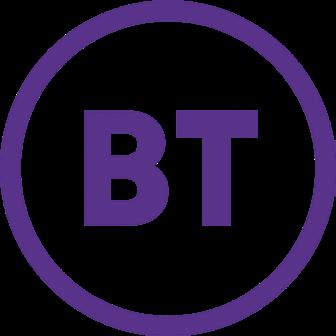
Our customers are at the heart of everything we do. So, we continue to review and improve our approach to take into account the needs of our customers. We recognise everyone’s circumstances are unique.
Supporting those with additional needs
For many, the landline is more than just a phone, as it supports equipment like health pendants or alarm systems. Customers need to feel confident that these systems will be there when they need them. We’ve been working with manufacturers since 2017 to support the switch to digital, including providing access to a dedicated testing lab.
We’re encouraging customers who use these systems to contact their provider if they’d like additional reassurance about these changes, to make sure their equipment is ready for a digital phone line.
Our Here For You campaign brings together products and services for those who need extra support. Here For You includes information about the latest accessibility options and priority services for customers with long-term illnesses or disabilities, advice for dealing with scams and the Home Essentials social tariff. You can let us know if you have additional needs by contacting us directly on 0800 800 150. We will be on hand to offer advice and support based on your circumstances and requirements.
Laying the foundations for success
To ensure we make the switch as simple as possible for everyone, we’ve set up a Digital Voice Advisory Group. We’ve been collaborating closely with consumer associations and charities that represent those with additional needs and those who live in rural areas. We are listening and learning to ensure everything from how we communicate, to the products and services we provide, are designed to support our customers.
Lorraine Gailey, Founding Director of Hearing Partners and member of the Digital Voice Advisory Group said: “We often take communication for granted. But for anyone who has problems hearing, life can be really challenging and isolating. We’ve been working with BT to ensure that customers who have hearing impairments receive the support they need when it comes to Digital Voice, so that they’re able to fully benefit from this new digital service.
As part of BT’s Customer Inclusion Panel for many years, I’ve found it positive and reassuring to see how the company is prioritising future technology that is inclusive and taking the time to make sure everyone can benefit.”
We’re here to help
Those who want to have a home phone will need to make the switch to digital by December 2025. BT is here to help customers through this transition. If you have additional needs, please do contact us directly and we’ll provide you with guidance based on your individual requirements. You can call us on 0800 800 150.

The switch will ensure everyone stays connected now and into the future with a future-proof home phone service.
For more information, visit bt.com/broadband/digital-voice.
ADVERTORIAL 31 Winter 2022 | DRM MAGAZINE
disabilityreviewmagazine.co.uk
Our customers are at the heart of everything we do. So, we continue to review and improve our approach to take into account the needs of our customers.
LINES Removing
Recently, I was in a waiting room at the local hospital. A couple were sat across in direct line of sight. Both displayed a very weak attempt at hiding the fact they were having some sort of conversation about me. I made the quite natural assumption they were obviously mesmerised by my good looks.
The duty nurse asked me over to measure my height, weight, and blood pressure and by the time she was finished with me, my seat had been taken by her next victim. The only one available was next to the chatty couple. For the sake of this article, I’m going to call them Jack and Jill. I sat down and immediately, Jack asked if my name was ‘Amo Raju’ and I confirmed.
The conversation developed where Jill (herself a disabled person) recalled me speaking to her parents nearly twenty years earlier whilst she was in her teens in a similar hospital setting. Apparently, Jill’s father was keen at that time to see more disabled people like me operating in high profile roles ensuring that young disabled adults had peers who would provide inspiration to his daughter.
Anyone who knows me well, will state my incredibly poor ability to recognise people and conversations from only a week earlier, let alone twenty years. However, in this case, there was a vague recollection of the conversation, particularly as it was
an opinion that I regularly shout from the rooftops – the more disabled people in highprofile roles, the better.

To cut a long-story short, Jill has grown up to be a successful self-employed childcare specialist who employs three other staff and in her second year of trading, has turned over in the region of £200,000. She smiled as she told me her father, who had since passed away, intermittently referred to me and a number of other successful disabled people simply to remind her of what can be achieved.
Jill’s confidence in briefly sharing her story with me was just so encouraging. Like me, you may agree that there is a need for more disabled people to share their achievements with a view to inspire the next few generations. Let’s face it, as a cohort, we are still in catch-up with mainstream society in terms of seeing people who share our experiences in all media, in senior management, in politics etc.
Since the publication of my book Walk Like A Man, I’ve been asked on many oc-casions to present snippets of my life to groups of professionals and peers. And I love it too! Not just because I adore the sound of my own voice, but because on each occasion, I can see a look in people’s eyes as I list examples of how time after time again, I proved those around me wrong in the limited expectations of what I could or should do.
Dr Amo Raju shares his own personal journey to breaking down barriers.
INDEPENDENT LIVING 32 DRM MAGAZINE | Winter 2022
Since the publication of my book ‘ Walk Like A Man’, I’ve been asked on many occasions to present snippets of my life to groups of professionals and peers.
disabilityreview magazine.co.uk
A couple of months ago, I was awarded a Doctorate by The University of Derby for my commitment to the voluntary sector and disabled people. The following paragraph is from my acceptance speech which I think endorses what I’m trying to say.
‘’In 1993, at the age of 24, I was assessed by a professional to spend the rest of my days in a day centre basketweaving or making bird tables. I walked out within a couple of hours. That experience had a profound effect on me.
Years later, I signed a contract with Derby City Council to take over that very day centre, which I rebranded, modernised and totally changed into a life skills centre.
The thing is, the last thing you should say to someone is that ‘you shouldn’t do this, you’re not able to do that or you mustn’t cross this line because that how things are just are’ – all that will happen is someone like me will have no option to not only cross the line but to remove it altogether.’’
So, I’ll finish with the simple message which has a twist of a request. If you have achieved something, if you have made a change which has bettered your own access to opportunities or for others, then do not be shy, share your experience with others. You may just inspire fantastic people like Jill or even another shy and reserved character like myself!
iAmo Raju is the CEO of Disability Direct, MD of Amo Raju & Associates and Author of ‘Walk Like A Man’ –available on Amazon.


AUTHOR: Dr. Amo Raju
TWITTER: @AmoSinghRaju
INSTAGRAM: @amorajuofficial
TIKTOK: @amorajuofficial
INDEPENDENT LIVING 33 Winter 2022 | DRM MAGAZINE
disabilityreviewmagazine.co.uk

34 DRM MAGAZINE | Winter 2022 INDEPENDENT LIVING
Credit: ranbynature.com |
disabilityreviewmagazine.co.uk
Photography: Emily Lavarello and Adrianne Aghata
THAT CARES CLOTHING
Lockdown due to the pandemic gave us many things, including the time to think about what we truly want from the world. This is highly noticeable in the fashion industry, where discussion around sustainability and inclusivity has never been higher up on the list of reasons why consumers buy from new, often independent, brands. This gap in the market is great news for consumers who want to move away from fast fashion, with labels that only fit a certain body type, however shopping for clothes when disabled can still be highly challenging. Although there have been many popular fashion brands attempting to plug this gap for disabled consumers - such as Tommy Hillfiger, ASOS and Nike - there is still a huge outcry for fashion in this area, perhaps partly because disabled individuals are left out of the conception of these products, or, do not feel as if inclusivity extends to further in the fashion industry, as, for example, brick and mortar stores continue to limit wheelchair access. There is so much scope to create fashion for disabled people, as many will have different needs - from incontience care being at the forefront to clothing that fits around a stoma - that those who are entering this space are finding it full of creativity.
Disability Review Magazine caught up with
some of the leading independent fashion brands designing for disabled people right now.

Chamiah Dewey Fashion
Chamiah Dewey Fashion went viral on Tik Tok for their September Fashion Week show, showing some incredible models with a capsule wardrobe Dewey pithily dubbed the “No.1 clothing brand for people under 4’10”.
INDEPENDENT LIVING 35 Winter 2022 | DRM MAGAZINE
Disability Review Magazine caught up with some of the leading independent fashion brands designing for disabled people right now.
I found that there wasn’t really anything on the market, the only clothing designed for little people at the time was unflattering.
disabilityreviewmagazine.co.uk
Credit: chamiahdeweyfashion.com | Model: Caitlin Holford Photographers: Cinnabar Studios, Andrew Searle & Tom Buller Flowers: Daisyshopuk
The idea is simple: they aim to create “positive portrayals of little people in the fashion industry, while providing ecoconscious, timeless designs.” Chamiah, as part of her studies for the London College of Fashion, began to create the collection that now includes simple and chic choices.

“I found that there wasn’t really anything on the market, the only clothing designed for little people at the time was unflattering, unstylish and very costly: I remember thinking that a young person wouldn’t want to wear that - they would want to fit in with their friends, not have to settle for pricey, unappealing clothing.” Dewey comments.
“So as part of my studies at London College of Fashion, I started to develop clothing for people with Dwarfism and in October (National Dwarfism Awareness Month) 2020, Chamiah Dewey Fashion was born. I believe that short stature people are the most forgotten about and ignored community of people out there, and I am passionate about changing that. I plan to put them at the forefront, to uplift their voices and to prove to the world that they are worthy of beauty and respect.”
Ran by Nature
Ran by Nature is an ethical and adaptive athleisure brand. “We don’t take a one size fits all approach. And all bodies stand side by side on our clothing rails.”
Founder and CEO Dr Bryna Chrismas comments.
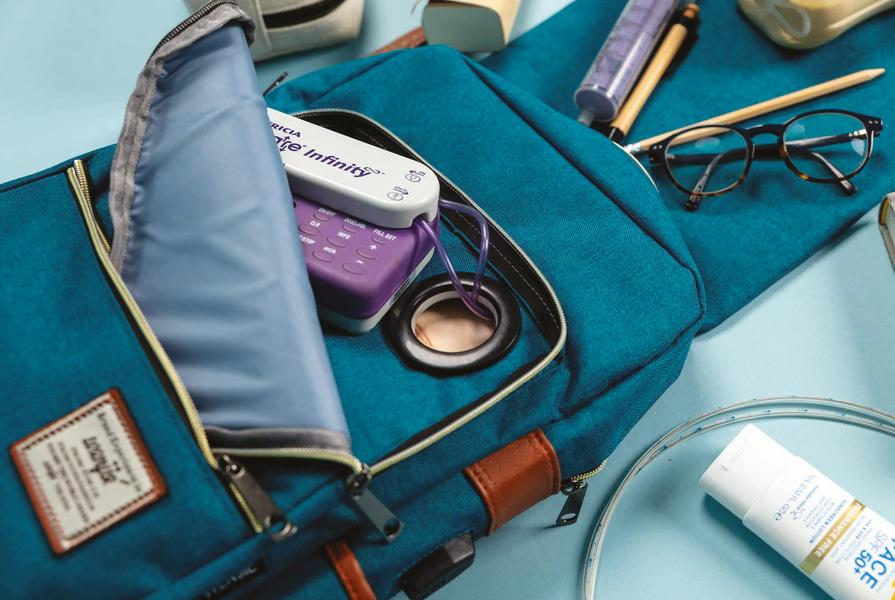

“Some brands have made small efforts to increase their size offerings, but true inclusivity means including diverse underrepresented groups from the design, development and testing of the product. And then making sure these profits go back to the groups that need it most.”
Indeed, Bryna has focused on making her clothing company give back to the community she caters for, hoping to make the company and its activism reach beyond surface level. Their athlete ambassador program allows athletes to receive 15% discount on clothing and 10% of general proceeds, as well as 10% of proceeds going to Limb Power a centre for those with limb difference to find support. Their focus is in custom adaptive activewear, adapting to limb loss, prosthesis, limb difference and so on. Dr Chrismas started the brand after a decade of research into exercise for health and performance. After working with women and underrepresented groups, she noticed the challenges and barriers faced by these groups to engage in movement, and the lack of inclusion within the exercise and fitness space. Bryna is passionate about making movement accessible and sustainable - as well as accessible activewear, Bryna also makes clothing such as a Sports Hijab and
INDEPENDENT LIVING 36 DRM MAGAZINE | Winter 2022 Credit: tubielife.co.uk
tubielife.co.uk disabilityreviewmagazine.co.uk
There is so much scope to create fashion for disabled people, as many will have different needs - from incontience care being at the forefront to clothing that fits around a stoma.
Credit:
a Sports Durag, where 10% of proceeds go to Active Inclusive and Black Trail Runners respectively.
Tubie life
For Faye Bingham, the creator of Tubie Life, having accessible and fun fashion was a passion project. Needing to use a Nasogastric Tube on and off for over a decade meant that she knew the problems that came with the feeding tubes.

“Being a university student and very active, being attached to an IV pole was not my idea of fun! The tube was literally always on my face and was very obvious. I got so many stares that it made me insecure, nervous, and anxious.” She comments, and Tubie Life was born. Faye created stylish and accessible backpacks that can fit a variety of personal items as well as the various items needed to use tubes such as Faye’s Nasogastric Tubes.
“The experience of living with a feeding tube is so individual, but for me, my feeding tube literally saved my life. I was severely underweight, malnourished and in and out of hospital. The feeding tube allows me to live at home with no hospital visits whilst staying healthy and happy. For me, Tubie Life began by being totally centred around the problems I faced being a feeding tube user. If I wasn’t a Tubie I just don’t believe I could do my business justice.”
Now, Tubie Life caters to other elements of using a feeding tube, having everything from scrunchies to seasonal accessories that keep the medical device in mind.
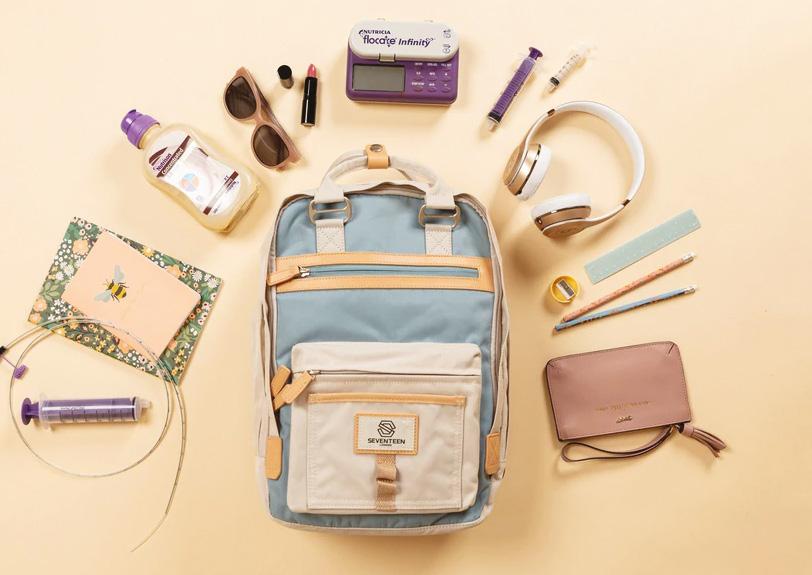
INDEPENDENT LIVING 37 Winter 2022 | DRM MAGAZINE
Credit: chamiahdeweyfashion.com disabilityreviewmagazine.co.uk
Credit: tubielife.co.uk


































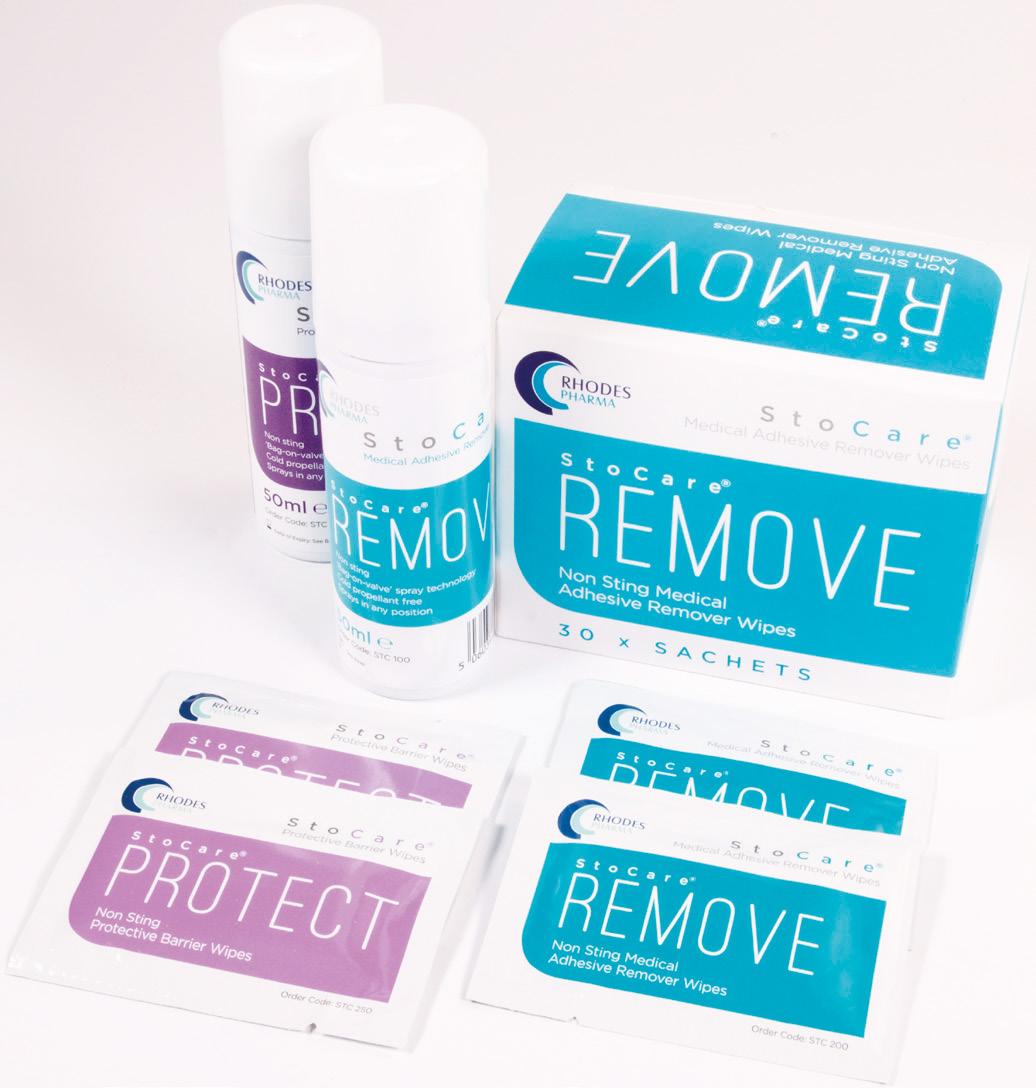















































ON THE NEW ELIZABETH LINE Accessibility
Treating the three separate parts of the Elizabeth Line as different lines in themselves, Carole Edrich and friends travel the Elizabeth Line to explore the accessibility of the project.

TRAVEL, ARTS & LEISURE DRM MAGAZINE | Winter 2022 40 disabilityreviewmagazine.co.uk
It took almost a decade to fight for accessible transport on the Elizabeth Line.


When the Crossrail designs were first drawn up, Hanwell, Manor Park, Maryland, Seven Kings, Iver, Langley and Taplow, Ealing, Newham and West of London respectively were planned with no lifts or step-free access at all.
Transport For All ran a successful campaign that combined lobbying of MPs, bringing an Early Day Motion to Parliament, and direct action. This included rallies, protests, and press, with the result that, once all the works have been completed, all 41 stations along the Elizabeth Line will have some degree of step-free access which will come from level boarding or a manual boarding ramp.
“It is thanks to the efforts of the disabled campaigners a decade ago that the Elizabeth Line will have the degree of accessibility it does.” Caroline Stickland, CEO of Transport For All commented. “Transport For All’s work doesn’t stop with the launch of the line, however, and they will continue to strive

for more accessible transport services.”
But just how has that accessibility translated?
Saturday with Sabine
We start our journey from the everfamiliar Liverpool Street Station.
Here, the huge and mostly uncluttered Station Hall is wide enough for wheelchairs aplenty providing the crowds are considerate.
Gorgeous wide walkways, ramps and lifts available (though you need to know where to find them) and easy-access shops. All of this means that leaving the station presents a minimum of hassle. Today we’re on assignment. More aware than normal of the needs of disabled friends and colleagues we look up to see somewhat less accessible first-floor shops, then search for a Quiet Room, finding none. Of course, if you have problems, you can ask an attendant for help, providing you can find one. If I had an attack of chronic fatigue (which comes on without notice) the few seats would be full, and stewards would be busy, so I’d most likely end up resting on the floor.
We follow signs to the Elizabeth Line platform, passing through ticket gates in the normal ratio of sizes which give prams and wheelchair users reasonable (but not brilliant) access.
Once seated in our carriage we are told of delays of about five minutes. We decide to wait. We wait through announcements of delays for another five minutes, then another five, then ten. When the tannoy tells us the train is delayed even further we get off.
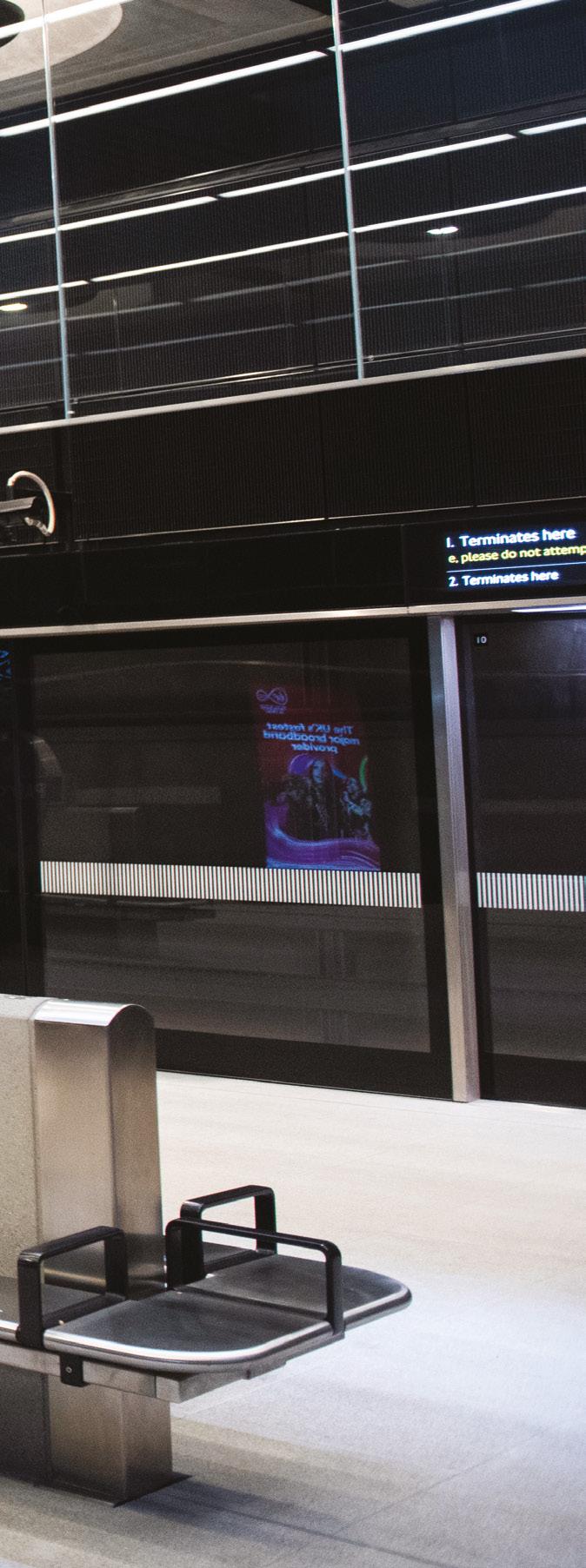
TRAVEL, ARTS & LEISURE Winter 2022 | DRM MAGAZINE 41 disabilityreviewmagazine.co.uk
Once all the works have been completed, all 41 stations along the Elizabeth Line will have some degree of step-free access which will come from level
Sabine comments: “After work I walked to Liverpool Street Station and took the Elizabeth Line to Stratford. The Central line is one of the loudest. Those few stops between Liverpool Street and Stratford make my head burst. The Elizabeth Line is wonderfully quiet. When I’m well, the Central Line’s noise is almost painful. When I have a slight headache (even when it’s not ap-proaching a migraine) it is much worse. That one stop between Liverpool Street and Stratford makes a lovely difference.”
Thursday with Ana
We get off Central Line at Stratford to an announcement of delays to the Elizabeth Line. We give up.
Ana comments: “Yesterday I rode between Manor Park and Liverpool Street Stations. The first thing I noticed was the different carriage layouts. One carriage had the same layout as the overground, the next was like an underground carriage and the last had a National Rail layout, with seats facing each other. The significant differences I saw were the safety wall barriers between the doors, and the wheelchair accessible seats had more width than other train layouts. The result was that there is less space for a wheelchair or other mobility aid
Stratford.
Elizabeth Line

to fit through the corridor openings which means evacuation would be a problem, as would getting to designated seats.
Also, whilst seating corridors were somewhat wider past the initial opening, a total of the same number of accessible seatings – 4 seats – was available as on every other train car. This both-ers me from an accessibility viewpoint. When TfL already knows that the over – and underground trains - lack an inclusive design, why stick to the three designs which are decidedly exclusive? Why not start from scratch when it comes to layout? And why further obstruct the corridor for those who already must push past the physical barrier as well as other humans?
While the wheelchair accessible seats were more noticeably designated
through the cushion design, there is still a limited choice, and competition with prams, pregnant passengers and inconsiderate or oblivious passengers will make that harder. Considering the increasing focus on invisible disabilities since Covid, keeping the same number of disabled seating seems both old-fashioned and short sighted.”
Sunday
I check with TFL and discover the Elizabeth Line does not run on Sundays.
Monday
I’ve seen a bus bearing Elizabeth Line colours pass Wanstead Station but can’t work out what benefit it gives – it is bound to be slower – so take the Central Line to Stratford instead. The
TRAVEL, ARTS & LEISURE DRM MAGAZINE | Winter 2022 42
After work I walked to Liverpool Street Station and took the
to
The Central line is one of the loudest. Those few stops between Liverpool Street and Stratford make my head burst. The Elizabeth Line is wonderfully quiet.
disabilityreviewmagazine.co.uk
best you can say for Stratford Station is that it’s confusing. As I alight from my carriage there is no clear Elizabeth Line signage so I go downstairs to a corridor. There, clear, and beautifully designed Line signs take me a little way along the corridor in the direction of Westfield Shopping Centre to the Shenfield platform. Great intentions, old clichéd behaviour.
The line to Shenfield is just rebranded mainline stock now. Since it is likely to carry all the old niggles and problems, I just visit the platform to see what I can learn. Once on it (I climb the stairs and pass a sign apologising for an out-of-order lift) a Station Staffer is clearly present. I tell her I was writing about the Elizabeth Line and how they deal with disabled passengers.
Cheerful and helpful, she responded, “You just need to come and ask. One of us is always on the platform, or two or three of us depending on how busy the station is. We ask where you’re going, then call ahead to the station you are going to. We help with the ramp when you get in, and they will have the ramp ready when you get off. You can also book it on the website. Let me get you a card.”
I ask what other accessibility options are available and must persuade her not to go and find me the large print tube map which seems to be it. She is a lovely lady. Super-kind, proactive, considerate, and enthusiastic. During the conversation, though, her voice increases in volume, and she started speaking slower and more clearly, leaving me with that strange confusion as to whether I should be annoyed that she has jumped to conclusions about my disability and become unconsciously condescending or pleased that she’s trying at all.
There is inconsistent signage at Stratford. I discover the inconsistency of Stratford Station signage again when I accidentally find the westbound Elizabeth Line while waiting for a Central Line connection (that same Central Line platform from which I had earlier disembarked).
Once in the new-style train I find it lovely. There is clear signage in both train and on platforms, and clearly spoken announcements with the same information. Carriage numbers are given for positioning, and I can actually feel the air conditioning. That is particularly reassuring as I am the only person wearing a mask for all my Elizabeth Line trips. I like the extra-safe door walls and the periodic graphical representations of where we are on our journey.
At Liverpool Street Station the route from where you disembark, to the platform from which you re-embark to continue the route to Paddington, is clearly marked. It is a bit of a trek though. I walk fast when well and timed it at 6 minutes, and there is little seating on the way. Theoretically this is a temporary state, while the rest
of the Elizabeth Line is constructed. It took over 13 years to build and was completed four years later than scheduled so I won’t be holding my breath. I enjoy the trip to the next stop – Farringdon – where I stop for lunch.


So far, the Elizabeth Line is much better than the rest of the tube and fantastic for step free access. It could be improved – especially the signage which can be quite confusing - but what couldn’t! It is very much better for those needing mobility aids. Whether to celebrate this achievement, campaign for more, ignore it or just stay angry is everyone’s choice. f course, accessibility doesn’t stop in the train. You know it. I know it, and the designers know it too, and as we continue to campaign for more accessible travel, we need to acknowledge that accessibility doesn’t stop there. Next stop, please.
AUTHOR: Carole Edrich, photographer, journalist and board member for Unlimited FACEBOOK: CaroleEdrichPhotography
TRAVEL, ARTS & LEISURE Winter 2022 | DRM MAGAZINE 43
So far, the Elizabeth Line is much better than the rest of the tube and fantastic for step free access.
disabilityreviewmagazine.co.uk
Where next?
REDISCOVERING TRAVEL ALONGSIDE CHRONIC ILLNESS
Before I acquired my disability, nothing could hold me back from an adventure. Whether it was boarding a minibus in the middle of the night for a dance competition or hopping on the train for a day at the seaside with my friends, travel felt like a natural extension of who I was. A tool to help me really make the most out of every day.
After my health took a nosedive, things were forced to change.
For many years, even leaving my house for a cuppa a couple of times a month was an accom-plishment, and something that would take days to recover from. Many people with chronic illnesses have lived this way for years or decades. I’ve been one of the lucky ones; lately, my health has very slowly and very steadily improved. I still have a long-term illness that presents enormous obstacles every day, but I eventually reached a point where I began to feel like I could re-engage with the world… and a big part of that for me was travel.
That being said, travelling anywhere with a chronic illness is no easy feat.
Every small moment of your day must be carefully managed through pacing. If you don’t manage your levels of exertion, your symptoms could flare, leaving you profoundly unwell for days. There was a time where I almost feared travelling.
While nothing can remove the physical toll of being in motion, I often found that one of the biggest barriers I faced when it came to travel was simply the planning and organisation. I couldn’t believe the amount of admin involved any time I wanted to make a train journey. To book assistance, I had to call the customer service line, join a queue, and sometimes spend up to thirty minutes confirming my details and explaining my needs.
Losing such a large chunk of your day would be frustrating for anybody. For me, as somebody who so carefully had to manage their activity levels, these phone calls would leave me drained. Even sitting still and speaking on the phone could cause my pain levels to spike, and I found I’d have to sacrifice other parts of my day simply to accommodate this.
44
Pippa Stacey explores the new technology that allows disabled people more freedom when travelling.
TRAVEL, ARTS & LEISURE DRM MAGAZINE | Winter 2022 disabilityreviewmagazine.co.uk
No need to give at least 24 hours’ notice and even then, question whether anybody will show up – now, I can book travel spontaneously, even on the same day if I feel up to it and feel confident my needs will be met.

45
TRAVEL, ARTS & LEISURE Winter 2022 | DRM MAGAZINE disabilityreviewmagazine.co.uk
Would I be stigmatised because my disability is less visible and chronic illness often poorly understood?
There
It took the joy away from travel. Sometimes, I decided that the journey wasn’t worth the ‘payback’ of the lengthy process. There were even times where, because of booking the assistance, I didn’t feel well enough to follow through and make the journey.
When I tried to discuss the issue, people would counter me by saying there was an online form I could use instead, and that was true – but every single time I submitted the online form, the assistance would never even show up. The situation was frustrating, but as with many of the barriers disabled people face, I assumed it was something I’d just have to deal with.
When I first learned of Passenger Assistance, an app for booking train assistance, I’ll admit I was skeptical. After my experience of online booking forms, how could I feel confident
the assistance would show up? My needs fluctuated – would the app be able to accommodate the fact that sometimes I used my own powerchair and required a ramp, and other times I needed the station wheelchair and assistance to reach my platform? Would I be stigmatised because my disability is less visible and chronic illness often poorly understood?

I’ve never been more pleased to be incorrect. This year, as I’ve continued to build up my strength and travelling has become a larger part of my work, Passenger Assistance has vastly improved my experience. The app is user-friendly, easily tailored to reflect fluctuating needs, and above all else… time and energy efficient. No matter where I am or where I’m going, that 20–30-minute phone call has been replaced by a few taps of a button, and that alone has had a transformative effect on my experience of travelling. No need to give at least 24 hours’ notice and even then, question whether anybody will show up – now, I can book travel spontaneously, even on the same day if I feel up to it and
feel confident my needs will be met. Put simply, the app has helped me to rediscover the joy of travelling and find ways of making it work for me.
It just goes to show that with innovative thinking and technological developments, we can tackle the barriers disabled people face head on and improve our day-to-day lives. Not only is the app of practical value, but for me, it’s also been incredibly empowering. Now, I feel much better equipped to begin exploring the country again and find new adventures… the only question is, where to next?
AUTHOR: Pippa Stacey
WEB: lifeofpippa.co.uk
INSTAGRAM: instagram.com/ lifeofpippa
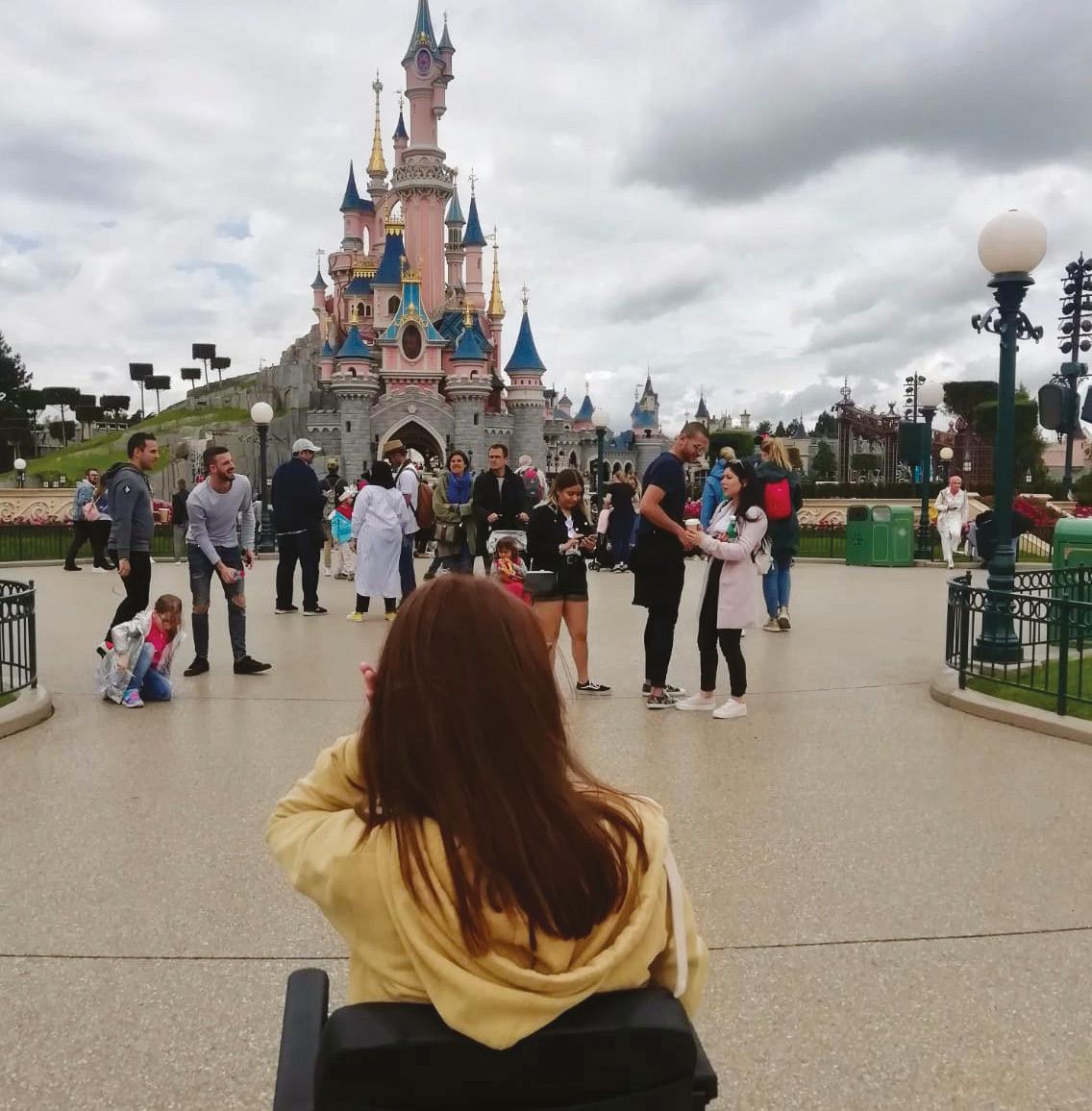
was a time where I almost feared travelling.
46
LEFT & BOTTOM
TRAVEL, ARTS & LEISURE DRM MAGAZINE | Winter 2022 disabilityreviewmagazine.co.uk
Pippa Stacey travels to Disneyland and uses public transport with more freedom due to apps and services that are increasing accessibility for disabled users.
A Scheme that put s you in the driving seat. And even two others.
The Motability Scheme is administered by Motability Operations Limited (Registered Company No. 1373876), City Gate House, 22 Southwark Bridge Road, London SE1 9HB. The facilities o ered are for the hire (bailment) of goods. You will not own the vehicle. Agreement subject to acceptance and age restrictions may apply. The agreement can be terminated early with the consent of Motability Operations Limited and administrative charges may be applicable. Mileage allowance of 20,000 miles per annum over three- or five-year terms. To qualify you must be in receipt of one of, the Higher Rate Mobility Component of Disability Living Allowance (DLA), the Enhanced Rate of the Mobility Component of Personal Independence Payment (PIP), the War Pensioners’ Mobility Supplement (WPMS) or the Armed Forces Independence Payment (AFIP), which will be taken in lieu of the four weekly hire rental. Attendance Allowance is a nonqualifying allowance. Terms and conditions apply and are available on request. Lookers is a trading name of Lookers Motor Group Limited, 3 Etchells Road, West Timperley, Altrincham, WA14 5XS, registered in England & Wales Reg. No. 143470. Authorised and regulated by the Financial Conduct Authority. We are a credit broker, not a lender and can introduce you to a number of lenders. Introducing you to a number of lenders means we receive a commission. Lenders pay commission at di erent rates either as a fixed fee or as a fixed percentage of the amount you borrow. The commission that we receive does not a ect the amount that you pay to the lender under the credit agreement.
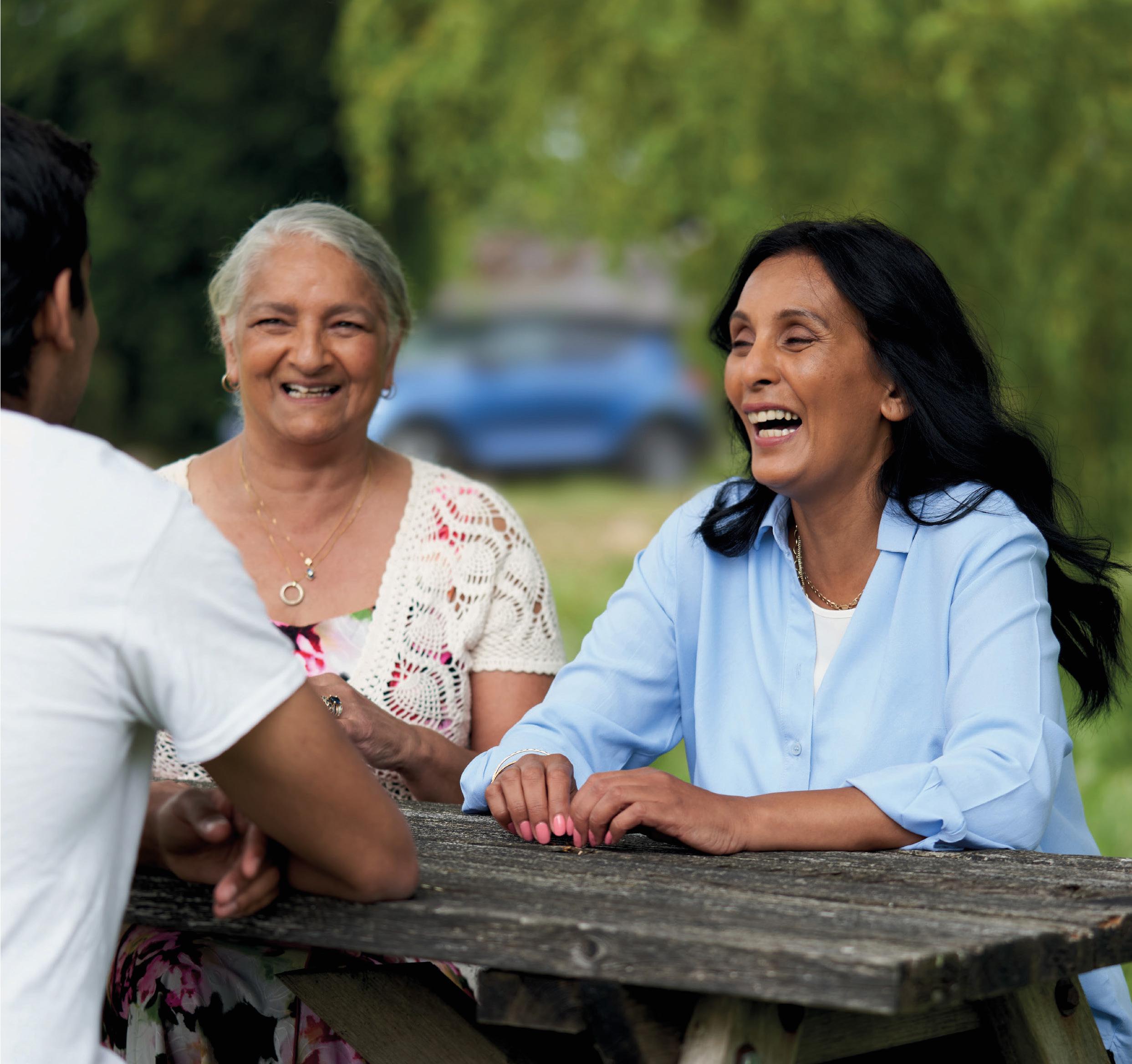
We’ve got dedicated parking you can reser ve for your visit. Just let us know and we’ll save you a space right out side. Talk to us about your ever yday freedom Visit: lookers.co.uk/motability Over 120 Dealerships throughout the UK and 22 Manufacturers represented we are sure to have the perfect solution for all your mobility needs. With insurance for up to three drivers included, you don’t need to drive to join the Motability Scheme with Lookers.
CIRCUS BEING HUMAN: meets CINEMA
Disability Review Magazine was invited to review Human, the new show from Extraordinary Bodies, at York Theatre Royal.*

TRAVEL, ARTS & LEISURE 48 DRM MAGAZINE | Winter 2022
disabilityreviewmagazine.co.uk
cinema and music, but I know that I’m expecting a performance that makes me think.


I get that, and more; I end up tearing up. Though only a small cast, a tight run time and even smaller props, only drums, a trapeze, a circus rope and a screen, Human manages to pack a punch, exploring poetry, spoken word, instrumentals, movement and circus performance to tell expressive stories about life and love. Sometimes the stories centred disability, and sometimes they didn’t - sometimes they were just about sweets. This all-encompassing casual approach to the inclusivity of the show was impressive.


Although there was clearly a lot of effort behind the scenes to make the right arrangements that would fit the most amount of people, it felt as though this could just be all This is how art and theatre could I thought. And it wasn’t just the performance - which allowed for an unwell cast member to be replaced by a video performance at the drop of a hat - but the social distancing, which wasn’t made out to be a big deal, the online Inclusion and Access pack, and the ability to watch a video screening for free. This all contributed to an atmosphere that felt like it had been made to consider everyone. Of course, nothing is ever fully accessible - whilst there was a lot going on which was enjoyable for me, for others the choppy performance might be frustrating or hard to follow. *This
Glass of white wine in hand (or, more accurately, plastic cup), I entered the impressive York Theatre Royal and was handed some bright LED headphones. This was an unexpected feature of Human that I was greeted with on arrival audio description was on-demand, accounting for those who needed it, or wanted to take a break from the noise mid performance. The staff were friendly and just on the right side of questioning for me to feel comfortable requesting certain access needs should I need them. I wasn’t entirely sure what to expect, as I’ve never seen a hybrid performance of circus,
TRAVEL, ARTS & LEISURE 49 Winter 2022 | DRM MAGAZINE
review was based on a press trip provided by Extraordinary Bodies.
disabilityreviewmagazine.co.uk
The staff were friendly and just on the right side of questioning for me to feel comfortable requesting certain access needs.
The performances, however, were enhanced using video on a large screen, with virtual commentary from another performer, as well as BSL translation. The choreography also was a true highlight, exploring complex emotions whilst also being visually breathtaking, and felt truly different to anything I’d ever seen before. Overall, Human encapsulated exactly what it set out to do, yet somehow was more than I expected. It was a true example of what disabled talent can do, without feeling overly inspiring, cliched or negative, and I can imagine that everyone would take away something different from the experience. The main point being, I suppose, that everyone could enjoy the experience in the best way for them to begin with, a feat for any arts show.
Though only a small cast, a tight run time and even smaller props, only drums, a trapeze, a circus rope and a screen, Human manages to pack a punch, exploring poetry, spoken word, instrumentals, movement and circus performance to tell expressive stories about life and love.



Extraordinary Bodies is now touring new show Delicate in the UK, between the 4th October to the 3rd December 2022.

TRAVEL, ARTS & LEISURE 50 DRM MAGAZINE | Winter 2022
disabilityreviewmagazine.co.uk
Introducing intermittent catheters.
Due to unique technology, these catheters do not stick or leave a messy residue on your hands and clothes.1,2 They are designed to make catheterising a more comfortable experience.
Find out more about GentleCath™ catheters





Do you have questions about your catheter?
Discover the me+™ support platform from Convatec, designed specifically for those living with an intermittent catheter. With lots of helpful information, guides, personalised training videos, myth-busting and more.
Get your catheters delivered to your door?
Join Amcare™. Our goal is to make your life easier by managing your prescription and sending your supplies out regularly and discreetly whilst being there to support you whenever you need us.
Find out more and register
TM Air
Visit the me+™ platform today

Are you an intermittent catheter user? Do you experience pain or discomfort when you catheterise?
Phase
©
If you are catheterising it shouldn’t feel uncomfortable. 1. WHRI6933 TA 1369 FeelClean
1 Report. 2. WHRI7131 TA 1486 v2
2022 Convatec. ™/® are trademarks of the Convatec group of companies. AP-57630-GBR
ARTS
Disability representation in media has notoriously been mediocre at best. It has so often been either poorly written or dampened by non-disabled people getting their mitts on it and almost always very few and far between.

Despite the ever-growing amount of representation coming from the community itself, our voices are still very rarely being heard. Far too often, we are spoken over, deemed less important, given less of a chance, and our well-thoughtout, genuine representation is frequently overshadowed by socalled representation written by people who aren’t disabled, and have no relationship to anyone with a disability of any kind. Or, worse, have a relationship with a disabled person and believe that this is worth them talking over other disabled people.
That means only one thing: there is still so, so much work to be done to make the writing and publishing world a safer, fairer place for both the disabled writers and readers within it.
I spoke to authors Lillie Lainoff (author of One For All, her debut novel which released earlier this year, where the main character has POTS, much like herself), Natalia Sylvester (most recently, the author of Breathe and Count Back from Ten, though she has two other published novels. Breathe and Count Back from Ten was released in May, following a girl with hip
52 DRM MAGAZINE | Winter 2022 TRAVEL, ARTS & LEISURE
Phoebe Jenkins, a writer, examines how disability is often presented in fiction, and how we can do better to be more inclusive in publishing.
WRITING THE BOOKS WE NEEDED AS KIDS: DISABILITY REPRESENTATION IN FICTION disabilityreviewmagazine.co.uk
dysplasia, once again like Natalia herself) and Stephanie Berchiolly (USA Today bestselling author, with three published novels) about their feelings towards disability in fiction.

for me. I spent so much of my life feeling I should keep quiet about my disability, not speak up about my needs so as to not be a ‘bother’ - all lies that ableism feeds us - so even the act itself of writing Breathe and Count Back from Ten was part of a process of refuting those lies and expelling them from my body. It’s also been really healing, because through writing, I’ve connected with others who get what I’ve gone through, and it reminds me that I’ve never been alone.

Lillie Lainoff: Writing books with disabled characters, having the representation resonate and aid readers...it truly means the world. It is bittersweet, too – I desperately wish that I had One For All as a teenager. To see a character with my chronic illness accept herself for who she truly is would’ve been life-changing. It is still lifechanging, just in different ways.
Natalia Sylvester: Writing about disability has been transformative
Stephanie Berchiolly: It’s extremely important because it’s the lens through which I’ve viewed the world my entire life. Growing up, there weren’t many people like me represented on page. Leaving a legacy of entertainment, education, inspiration, and being able to impact the normalisation of disability in this country means a lot to me.
LL: Let us tell our stories and prioritise those stories. I know so many wonderful books by disabled authors with disability representation that get such little attention. Those books could change lives if they were actively publicised more. Before recommending a book with disability representation, research what disabled readers have said about it. The disabled community is not a monolith, so of course not all readers will have agreeing stances on representation, but seeing books like Me Before You, for instance, on Disability Pride Month recommendation lists tells me a lot. Stop equating sick-lit books with books about chronic illness. One is a genre that typically romanticises terminal and chronic illnesses, the other is a book with chronic illness representation.
NS: We need more books by disabled authors, but we also desperately need more disabled editors, marketers, publicists, salespeople...it takes so much collaboration to make a book successful, and it’s important that it be an organic process based on shared lived experiences.
TRAVEL, ARTS & LEISURE 53 Winter 2022 | DRM MAGAZINE
To see a character with my chronic illness accept herself for who she truly is would’ve been lifechanging. . It is still life-changing, just in different ways.
Q: What do you think can, and should, be done to not only make the writing community and publishing industry a better, safer, more welcoming place for disabled authors but to make it so that our voices are truly being heard?
We need more books by disabled authors, but we also desperately need more disabled editors, marketers, publicists, salespeople...it takes so much collaboration to make a book successful, and it’s important that it be an organic process based on shared lived experiences
Q: What does it mean for you to be able to not only see but contribute to disability representation through your work?
disabilityreviewmagazine.co.uk
SB: There isn’t enough attention or opportunities for disabled authors in traditional publishing. A lot of talented disabled authors languish in relative obscurity. Indie authors have the ability to make it in their own right with good writing, marketing chops and perseverance. But education and making room for us at the table is desperately needed. It’s hard enough for anyone to get representation but levelling the playing field for a group of people for whom the minefield is impossible to navigate would go a long way. This could be as simple as just having disability specific genres in Amazon categories or hiring disabled editors/agents at publishing companies.
I was lucky enough to speak to Miya Queen, Robin Hahn, and Juan Zambrano (referred to by their initials
in their response to my questions) I also spoke with some readers, to find out their side of the story.
one of them being disabled, and the other struggling with her prejudices in regard to disability. It’s well informed and clear that the author/artist did the work to properly research.
RH: I really loved the disability representation in Even If We Break by Marieke Nijkamp. It was woven into the fabric of the story without being a story solely about disability. We deserve to see ourselves in mysteries, in YA dramas, in fantasy novels – in every genre, not just in “disability books”. Disability is a natural human variation, and we can be heroes in other stories, too.
MQ: Perfect World by Rie Aruga so far has been, to me, the best at representing disability and how non-disabled folks see disability that I’ve read thus far. The main characters are having to get through their own battles with
Writing books with disabled characters, having the representation resonate and aid readers...it truly means the world. It is bittersweet, too – I desperately wish that I had One For All as a teenager.



To see a character with my chronic illness accept herself for who she truly is would’ve been life-changing. It is still life-changing, just in different ways.
JZ: My favourite example of disability representation in literature is the portrayal of dyslexia and ADHD in Rick Riordan’s Camp Half-Blood Chronicles (Percy Jackson & The Olympians, The Heroes of Olympus, etc). Both disabilities are indicators of a character’s status as a demigod throughout the series, dyslexia being a demigod’s natural ability to read and understand Greek, ADHD being a demigod’s ever active battle instinct. This does fall into the ‘Disability As a Superpower’ trope, but Riordan does show the struggles that come with both disabilities, without making them a character’s defining traits. Basically, being a demigod sucks, but for reasons beyond disability.
TRAVEL, ARTS & LEISURE 54 DRM MAGAZINE | Winter 2022
Q: In your personal opinion, what is your favourite example of disability representation in books that was done right/well?
disabilityreviewmagazine.co.uk
MQ: They’re assuming we either are inspirations or something to pity. We deserve acknowledgement that we can be regular people with similar issues to abled people, our issues just might be slightly modified. Also, assuming that being disabled is the be all, end all is an awful trope.
RH: I often see disability used like a plot point, or like a Chekov’s gun, but my identity isn’t a story beat; it’s part of the fabric of who I am. Don’t make a character disabled because you need them to “learn their disability is a superpower” later – instead make them disabled because disabled characters can be heroes, too.
JZ: There are plenty of things people outside the disability community struggle with when
tackling disability in literature. For me, a big one is the lack of specificity when it comes to disability. A lot of disabilities are implied in writing, say Tiny Tim using crutches. I would like to see more overt representation. As someone with Cerebral Palsy, I want to see a central character who explicitly lives with it, in any of its many forms. This would allow for more disability visibility, perhaps even exploring more obscure disabilities, thus opening more doors for writers to learn and understand.
our life experiences. Do proper research in regard to disability and make sure to compensate, and respect, the disabled folks that offer their guidance.
RH: A push towards true accessibility and disability inclusivity in any community means centring disabled voices –especially that of BIPOC disabled voices. Not tokenism; not oneand-done, pat-on-the-back-andmove-on, world-peace-achieved celebration of the non-disabled and non-marginalised folks in power for deigning to celebrate one disabled author, then moving on. A radical change means shifting the focus and continuing to listen to disabled folks, forever.
JZ: More representation is the easiest way to make us feel welcome. Authors could also open more of a dialogue with readers who are disabled, open the doors for feedback from us. We’re not here just to educate but get us more involved.
MQ: Listen to disabled voices. Hear our suggestions, our grievances, our appraisal, and
After hearing from so many people in the community and getting to not only know but also understand their thoughts and feelings on disability representation, I think it’s more than safe to say that our representation has come a long, long way over the course of these past few years; but there is still so much work that needs to be done. Not just on the side of those that are working far harder than they should be to be accurately and fairly represented or listened to.
Listen to disabled authors, hear our voices. Normalising an experience that so few wish to learn about or understand isn’t an easy task, and it isn’t one that will be fruitful overnight, but it’s a task worth fulfilling.

We are tired of being left out of the pages, and I think it’s high time that starts to change. More importantly, I think it can change - in fact, maybe it already has. And with ever so many amazing disabled authors and readers cropping up here, there and everywhere, it truly can do nothing except give us faith in the future of disability representation in literature.
AUTHOR: Phoebe Jenkins TWITTER: @WriteWithPhee
Q: What are people/ other authors that aren’t disabled and aren’t a part of disabled writing and reading communities getting wrong when it comes to disability representation?
Q: What do you think can and should be done to not only make the writing and reading community and publishing industry a better, safer, more welcoming place for disabled authors and readers alike, but to also make it so that our voices are actually being heard?
TRAVEL, ARTS & LEISURE 55 Winter 2022 | DRM MAGAZINE disabilityreviewmagazine.co.uk
*Fiat 500e available on the Motability scheme. Advance payment costs will vary depending on model/version. Model shown: 500e La Prima Electric 42kw 118hp available on the Motability scheme from £2,595 Advance Payment. Vehicles are only available through Motability-accredited participating Fiat Retailers and are not available in conjunction with any other offer. Advance Payments are correct at time of publishing and are subject to orders being placed between 1st October to 31st December 2022. Terms & Conditions apply. Offer may be varied and withdrawn at any time.

^These figures were obtained after the battery had been fully charged. The New Fiat 500 is a battery electric vehicle requiring mains electricity for charging. There is a new test for fuel consumption, CO2 and electric range figures. The electric range shown was achieved using the new test procedure. Figures shown are for comparability purposes. Only compare electric range figures with other cars tested to the same technical procedures. These figures may not reflect real life driving results, which will depend upon a number of factors including the starting charge of the battery,
and vehicle load.
fiat.co.uk The All-Electric Fiat 500, Dolcevita by Design. And with a range of up to 199 miles^ , you never have to stop exploring. Get ready to experience a whole new way of driving, the All-Electric 500 offers a
Mode”, which intuitively saves energy where necessary to get you to your destination without hiccups. The All-Electric 500 is available with Passive Entry and a Wearable Key, Attention Assist, Lane control, Traffic Sign Recognition, Autonomous Emergency Braking and Connected services. Best Electric Small Car Fiat 500 ALL-ELECTRIC FIAT 500 AVAILABLE ON THE MOTABILITY SCHEME*
accessories fitted (post-registration), variations in weather, driving styles
“Sherpa
UNLIMITED OPPORTUNITY FOR DISABLED ARTISTS ARTS

The Unlimited Micro Awards, created by Unlimited and the British Council, help disabled UK artists develop new relationships with disabled artists in low - to middle — income countries. Carole Edrich explains.
Lack of access, stereotypical assumptions, ableism and increased susceptibility to Covid-19 were some of the many unique and unprecedented additional challenges faced by disabled people worldwide at the start of the pandemic.
Anticipating the emergence of effective vaccines and ‘new normals’, the British Council and Unlimited, an art collective, launched the first Micro Awards in 2020. Their objective was to ensure that disabled artists were able to respond confidently with alternative options and models, doing what they always do: help us imagine the world differently.
Since physical travel was at a standstill, the new fund was designed to respond to the times, providing space and opportunity
for 20 pairs of artists or collectives to be supported in the development of small, online collaborations through the pandemic. In keeping with Unlimited focus and principles, they worked with the British Council to strengthen links between UK artists and those from low - to middle — income countries.
Now, the programme is on its fourth round, but what exactly is it, and how does it help?
Three Examples
It is testament both to Unlimited’s vision and the creativity and tenacity of the winners of the first two rounds that they were able to make their £1,000 grants go so far:
TRAVEL, ARTS & LEISURE 57 Winter 2022 | DRM MAGAZINE
disabilityreviewmagazine.co.uk
Nye Russell-Thompson used the grant to develop his producing skills and continue the group’s creative development for his Unlimited R&D project about intrusive thoughts whilst Laura Djao used the award to develop her spoken-word project Queen Bitch, the words of which synthesise the nine points of intersectionality with which she identifies. The poem was interpreted by 13 women of different backgrounds, ethnicities, abilities, disabilities and dance styles and a video was compiled.
Byron Vincent used his micro grant to launch the podcast ‘Bangers and Mash’, this lead to a commission by Community Justice Scotland to produce, present and edit a podcast entitled Justice Disrupted.

“These awards are to enable the building of artistic connections between UK-based
and international disabled artists,” Rachel Walker, Unlimited’s Programme Manager commented “They recognise the value and opportunity that comes with just making that initial link, especially across borders.”

Significant Ongoing Partnership
The micro-awards have clearly grown into a significant ongoing partnership between Unlimited and the British Council. To date, each round has offered twenty UK based disabled artists funding. The fund is to enable UK based disabled artists or collectives to collaborate with one or more international artists from countries in receipt of Official Development Assistance.
As you would expect from Unlimited, its leading-edge inclusive practices mean that you
can apply online through a form or in alternative formats including video and voice. Access support is also available.
Any Discipline, Any ODA Country
Unlimited and British Council aim to hear from a full diversity of disabled artists, working in any discipline across the UK. These could be Theatre, Poetry, Circus, Dance or any other art form. The use of the term ‘disabled artist’ includes any artist who identify as being disabled, D/ deaf, neurodivergent and those experiencing chronic illness, mental health conditions and more.
When applying for one of these awards, artists can submit projects that centre around disability/ impairment, or the project can be about something else entirely. Projects must be led by a disabled artist/collective based in England, Northern Ireland, Scotland or Wales and International collaborators must be a disabled artist / collective based in one of the countries in receipt of ODA (Official Development Assistance):
AUTHOR: Carole Edrich, photographer and journalist,and board member for Unlimited
WEBSITE: dancetog.com/travel-lifestylecuttings
FACEBOOK: CaroleEdrichPhotography
TRAVEL, ARTS & LEISURE 58 DRM MAGAZINE | Winter 2022 disabilityreviewmagazine.co.uk
As you would expect from Unlimited, its leading-edge inclusive practices mean that you can apply online through a form or in alternative formats in-cluding video and voice.








RUBY® 10 with speech As the UK’s leading provider of hardware and software solutions for the blind, visually impaired, and people with learning, reading, and writing difficulties, our products can improve your quality of life at work, at study or at home. Magnify small objects and fine print up to 24X Scan and read full page documents 10’’ Touch screen menu and tactile buttons 3.5 Hours continuous use and 4 hours charging time Find out more: Call 01604 798070 Online www.sightandsound.co.uk SAVE £400! only £1350 (Excl VAT) Limited Time only RUBY® 10 with speech
The RUBY® 10 video magnifier has three dedicated cameras.
Use it to magnify letters, magazines, labels and photos.
The swing-out arm allows you to view items in your hand and write.
When extended, the arm also enables full-page OCR so that scanned pages are read aloud to you.
The third camera is dedicated to seeing objects at a short distance such as signs and menus on a wall. Sign-up for news and offers on our website use coupon code: DRM1
•
•
•
•
•
CHANGING MOTORSPORT, CHANGING LIVES Team BRIT
Team BRIT are aiming to be the first all-disabled team to race in Le Mans, an iconic 24 hour race in France.

DISABILITY SPORT 60 DRM MAGAZINE | Winter 2022
disabilityreviewmagazine.co.uk
For many disabled athletes and sports people, organised, professional competition often involves participation in separate ‘classes’ or championships specifically for those with disabilities. What if this wasn’t necessary and the playing field was completely level? That’s exactly what is becoming a reality in motorsport, thanks to Team BRIT.



In 2015, former Royal Engineer Dave Player formed Team BRIT, with the aim of being the first ever all-disabled team to race in the iconic Le Mans 24 hour.

The team was created as a development of Dave’s charity, KartForce – which supports injured military troops in their rehabilitation and recovery through motorsport. Dave created a set of hand controls that could be fitted into standard go karts and enabled disabled drivers to race on equal terms. KartForce hosts karting events up and down the country and has been found to have a significantly positive impact on people living with PTSD or mental health conditions.
Some of the KartForce drivers asked Dave to explore options for stepping up into car racing and Team BRIT was formed. With the help of technical experts, Dave re-developed the karting hand controls to become racing hand controls, which were easily removable from the team’s VW Golf. This meant that drivers with a wide range of physical and psychological disabilities could compete in endurance races as part of the same team. The hand controls are now the most advanced in the world.

DISABILITY SPORT
61 Winter 2022 | DRM MAGAZINE
Our plan was to build a bank of disabled talent, and fill the roles within companies with amazing, proactive, super talented, disabled people.
RIGHT
Dave Player, former Royal Engineer and Team BRIT founder
FAR LEFT
All drivers
disabilityre viewmagazine .co.uk
LEFT Bobby Trundley
From two drivers and 1 VW Golf in 2015, to nine drivers, a McLaren 570S GT4, an Aston Martin V8 Vantage GT4 and two BMWs in 2022, the team has grown incredibly, pushing forward with bold determination towards its Le Mans goal. This year, two of the team’s drivers have competed in British GT – the pinnacle of UK endurance racing, making history as the first ever all-disabled team to do so.
For McLaren driver Bobby Trundley, motorsport has been life changing. Diagnosed with autism aged 4, Bobby struggled at school. He discovered karting when he was invited to a birthday party at the age of 10, and having initially been too terrified to take part, he went on to win the race that day, before becoming a five-time national karting champion.
He joined Team BRIT in 2019 and won four out of his five races in his first ever year of car racing. He is now one of two drivers racing in the British GT Championship.

Bobby says: “I wouldn’t be who I am today without Team BRIT. When I joined the team I couldn’t go
anywhere without my mum, I really struggled in social situations, and I had no confidence. Now, I travel the country and across the world with the team, give presentations to hundreds of people and I’m racing in one of the top GT4 championships in Europe. I feel extremely privileged to have been given this chance.”
For rookie driver Chris Overend, the team has given him the chance to realise a long-held dream. Chris was born with development dysplasia of the hips and as his condition deteriorated, he had to give up his profession as a fashion photographer. He started playing wheelchair tennis and had been heavily into sim racing for years. He found the team when looking for adaptive sim controls and was eventually assessed and offered a place in the team.
Chris said: “It’s hard to sum up what this opportunity means to me. Being a racing driver is something I’ve dreamt of since I was a kid, and even more so when I was a teenager, spending 5 or 6 hours a night racing sims. It’s so surreal to be given this
chance but I’m determined to work hard to get as fit and healthy as I can. I want to be part of the team that makes it to Le Mans and I’ll be doing all I can to get there.”
Dave Player comments: “When I look back at how we’ve grown since 2015, I’m beyond proud.”
“We’ve created a team with the people, technology, and sponsorship we need to form an infra-structure that works. This now means we have a ladder of motorsport opportunity for disabled drivers, from our eSports arm, eTeam BRIT, to our racing academy offering track day experiences for disabled drivers, and our competitive racing team.

Moving up to British GT this year has been the realisation of our long-term goals and moves us very close to our Le Mans target. Alongside that, we’re welcoming more rookie drivers into the Britcar Championship where their skills and confidence on track can grow.”
iAnyone interested in finding out more about Team BRIT track or racing opportunities, or about bespoke hand controls should email info@ teambrit.co.uk More information is available at teambrit.co.uk
DISABILITY SPORT 62 DRM MAGAZINE | Winter 2022
I wouldn’t be who I am today without Team BRIT. When I joined the team I couldn’t go anywhere without my mum, I really struggled in social situations, and I had no confidence. Now, I travel the country and across the world.
AUTHOR: Lucy Sheehan, Team BRIT WEB: teambrit.co.uk
TOP Aaron Morgan (l), Bobby Trundley
disabilityreviewmagazine.co.uk
RIGHT James Whitley and Chris Overend

NEW ALFA ROMEO TONALE HYBRID. AVAILABLE ON THE MOTABILITY SCHEME* *Alfa Romeo Tonale Ti available on the Motability scheme. Advance payment costs will vary depending on model/version. Model shown: Tonale Veloce not available on the Motability scheme. Vehicles are only available through Motability-accredited participating Alfa Romeo Retailers and are not available in conjunction with any other offer. Advance Payments are correct at time of publishing and are subject to orders being placed between 1st October to 31st December 2022. Terms & Conditions apply. Offer may be varied and withdrawn at any time.
ARTS
FIFA, KAYAKING & MARKETS: QATAR, THE MOST WHEELCHAIR FRIENDLY PLACE IN THE MIDDLE EAST?

For perfect sunshine, authentic Islamic culture and a sporty splash of modernity, Daniel Edward, visits Qatar to discover more about the emerging Middle East capital of sport.
When the FIFA World Cup kicked off in November, millions of football fans across the world discovered a country in the little peninsular jutting out to the east of Saudi Arabia. There’s so much to enjoy here… in the cooler months, which is why the World Cup is taking place in the winter for the very first time.
Beyond the matches, one of the biggest benefits of a major event like FIFA coming to town, is a renewed focus on accessibility, and Qatar is very much ahead of the curve on this compared to its regional neighbours.
Doha is a modern city and pretty much all buildings are designed with accessibility in mind, especially hotels, museums, and shopping malls. With its heritage in pearl diving, Qatar’s fortunes dramatically transformed with the monumental discovery of oil and despite a fine collection of glass skyscrapers and brand-new football stadiums, the city retains a uniquely
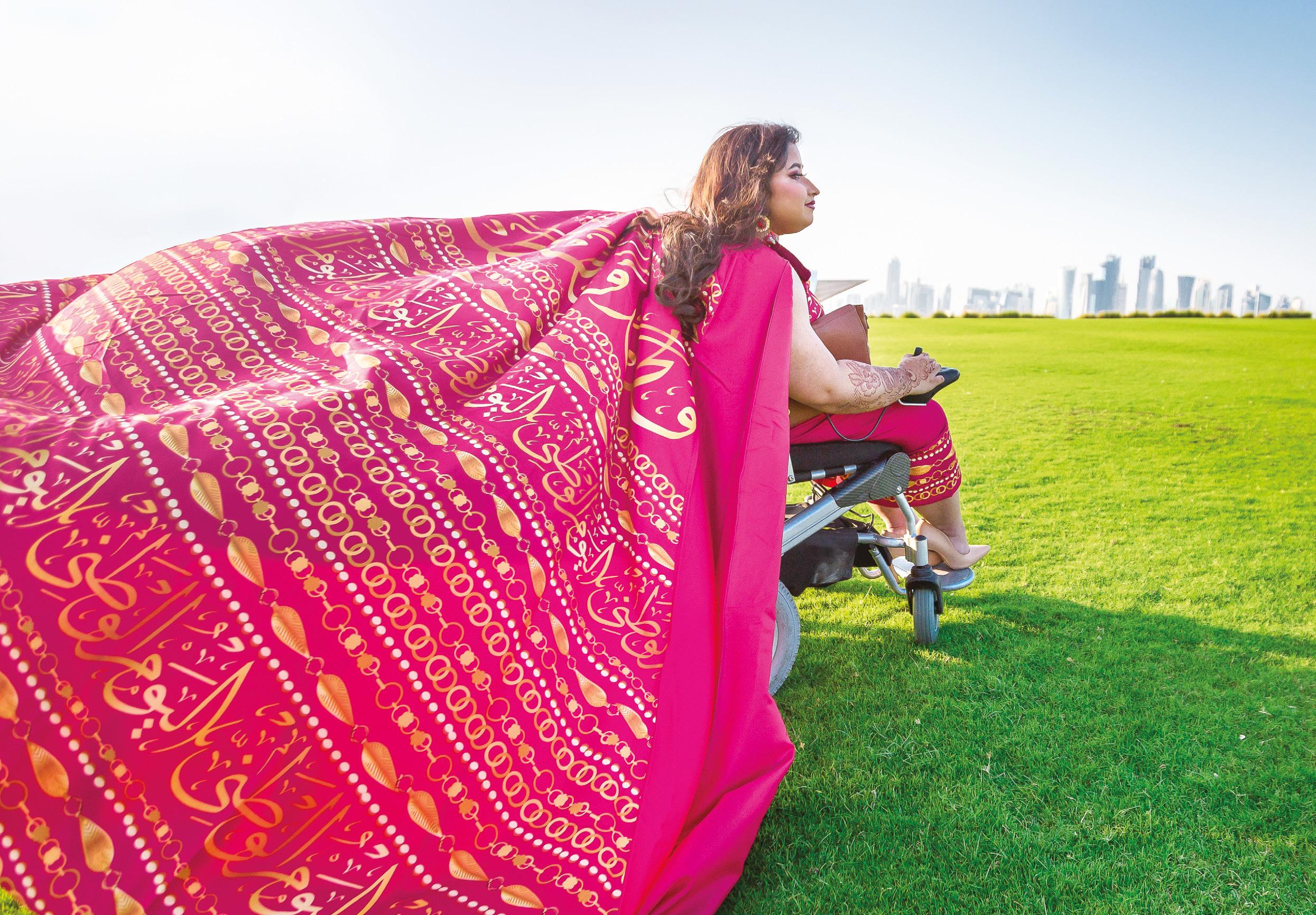
64 DRM MAGAZINE | Winter 2022 DISABILITY SPORT
disabilityreviewmagazine.co.uk
Arabian essence.
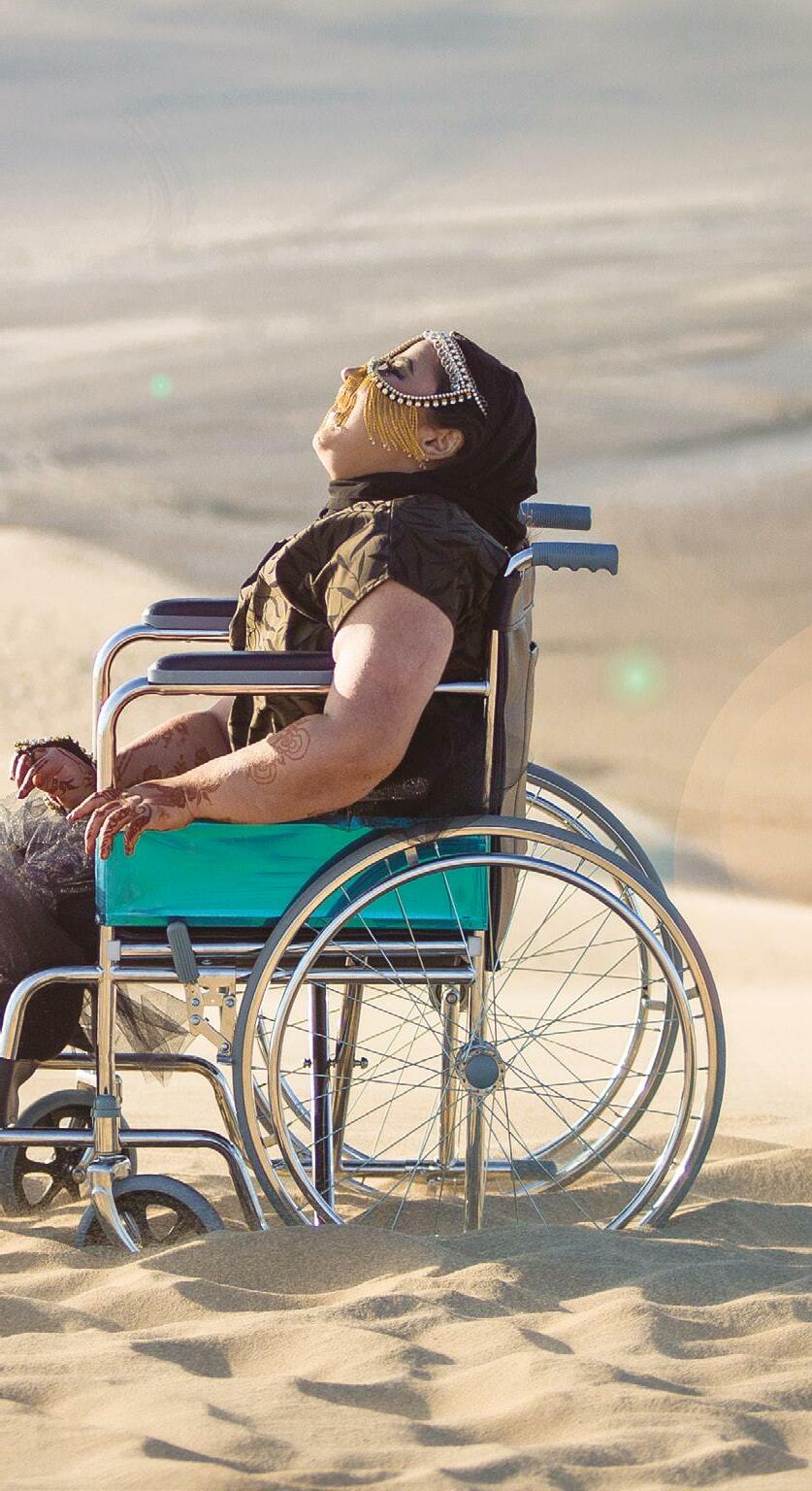


Souq Waqif is a bustling market district, with stalls lining busy arched walkways, shaded from the reliable desert sun. I visit in the evening when the temperature has cooled to a comfortable British summer’s afternoon. Outside, I pause to watch two camels trying to bite off each other’s colourful crocheted face masks. I’m not sure whether local rules prohibiting public displays of affection stretch to camels, but their handler seems
somewhat perturbed by their exhibitionist biting and pushes them away from each other. Inside the market, more animals await, and these ones are for sale: falcons.
Falconry is a popular Qatari sport with a long heritage, so culturally important that there is even a government-funded hospital for the birds. I nosey into one of the falconry shops, where three hooded birds are gnawing at raw meat on their perches.
Round the corner, spices and jewellery shops arrest the senses, and draw a crowd of locals. Staff are on hand with wheelbarrows to assist shoppers carrying their purchases. It feels like I’ve travelled back in time, or straight into a movie. And yet, across the bay I can see the modern downtown lit up and twinkling against the steadily darkening sky.
On the other side of those skyscrapers, Doha’s expat community is sitting down for dinner in the fancy Pearl District, a luxurious locale with an abundance of hotels and restaurants serving posh nosh along the waterfront. Prices aren’t nearly as expensive here compared to nearby tourist hotspots and it’s possible to experience top notch luxury for the price of a 3* room in London, with pretty much a guarantee you won’t need to pack an umbrella… unless it’s for the sun.
DISABILITY SPORT 65 Winter 2022 | DRM MAGAZINE
I love showcasing the balance in Qatar and how the country is preserving Islamic culture while becoming a global modern city for
disabilityreviewmagazine.co.uk
With its heritage in pearl diving, Qatar’s fortunes dramatically transformed with the monumental discovery of oil and despite a fine collection of glass skyscrapers and brand-new football stadiums, the city retains a uniquely Arabian essence.
Nawaal Akram was listed in the BBC’s Top 100 Most Influential Women in the World in 2017 for her disability rights activism. Born in Qatar, she was taken out of school after being diagnosed with Muscular Dystrophy Duchenne.
“I love showcasing the balance in Qatar and how the country is preserving Islamic culture while becoming a global modern city for everyone to enjoy,” Akram comments when asked her favourite place in Qatar. “I recommend having a stroll through the Museum of Islamic Art and visiting MIA Park, which has beautiful views of the Doha skyline. I take visiting friends to the National Museum of Qatar, Mall of Qatar, Vendome Mall and Souq Waqif. I also always want people to experience desert camping for the excitement and change of scenery.”
And, to get around? Nawaal uses a wheelchair as their mobility aid and recommends Karwa Taxi to get to her nearest metro stations, which she says is fully wheelchair accessible. “Contact places beforehand and check how they can accommodate your disability,” Nawaal advises. “Even if you aren’t booking tours, you can still visit most parks, museums, and heritage locations, like Souq Waqif,
using the Metro. I even go kayaking in the mangroves; I just check with the staff that they are open to helping me and I then instruct them on how they can help me. It’s been easy to join activities as people are always open to accommodating me.”
Another local, Sherif Mohamed Elgindi, moved to Qatar as a teenager and lived in Doha for a decade. Sherif uses an electric wheelchair to get around and says that Doha’s metro system has really opened up the city for him to live independently.
“Qatar is the most accessible country in the Middle East and I find locals are


welcoming and willing to be inclusive, though you will still encounter some pavements that do not have ramps, or, more puzzlingly, have a step in front of the ramp. It’s a good idea to visit with someone who knows the area well or inquire before you head out somewhere; people will try to help.”

However, it’s not all perfect, as both Nawaal and Sherif agree that Katara can often be difficult and uncomfortable in a wheelchair:
“Despite its beautiful environment and great weather, especially in the autumn and winter, I find Katara difficult and uncomfortable in a wheelchair due to the cobblestone pavement,” Sherif advises. “Unless you don’t mind a bumpy ride, I’d advise checking out other parts of the city, such as the parks and museums.”
66 DRM MAGAZINE | Winter 2 022 DISABILITY SPORT
AUTHOR: Daniel Edward, a professional freelance travel writer based in London.
disabilityreviewmagazine.co.uk
Despite its beautiful environment and great weather, especially in the autumn and winter, I find Katara difficult and uncomfortable in a wheelchair due to the cobblestone pavement, Sherif advises.
Why not give our Weekly Lottery a go? Entry is only £1 a week with huge cash prizes announced every Friday. A massive win could make your weekend! It could be you. And it will be you helping people with a learning disability to lead happy, healthy lives, as well as supporting their families. Every entry counts. So don’t delay! It’s easy to enter and you could be in with the chance to win every week!

Head over to mencap.charitylotteries.co.uk to find out more. Imagine what you would do with £25,000 cash! For full terms and conditions please call 0845 077 0777 or go online at www.mencap.org.uk. Licensed and regulated by the Gambling Commission. Licence number: 20259. Website: www.gamblingcommission.gov.uk. Must be 18 or over to play. Under age gambling is an offence. £1 per entry. Any late entries will be gratefully accepted as a donation. If you feel you have a problem with gambling, visit www.begambleaware.org or call the National Gambling Helpline 0808 8020 133. Responsible person: Danielle Williams. Promoter: Royal Mencap Society, Concordia House, 123 Golden Lane, London EC1Y 0RT. Charity number 222377 (England and Wales); SC041079 (Scotland). Your gift will be used to support Mencap’s services across England, Wales and Northern Ireland. 2021.179

























call the National Gambling Helpline on 0808 8020 133



















































3 1 6 4 9
Fancy a weekly chance to win with £25,000 as 1st prize?
1st prize: £25,000 with 6 numbers matched 2nd prize: £1,000 with 5 numbers matched 3rd prize: £25 with 4 numbers matched 4th prize: £5 with 3 numbers matched Prize entries in the next draw If you feel you have a problem with gambling visit
or
www.begambleaware.org
5 GO-TO WINTER COMFORT FOODS FOR DIABETES

Winter is the time of year when we like to tuck ourselves under a blanket with a mug of warm cocoa and a book, enjoy the embracing warmth and make ourselves feel comfy. We expect the same from winter dishes — to be soothed and cozy. However, these are often relatively heavy foods containing a lot of fat and carbohydrates, so unfortunately not always friendly to people with diabetes. So what should you prepare this winter to feel the warmth while still caring for your health? Here are five wonderful (and simple) recipes for healthy winter comfort foods. Let’s cook!

68 DRM MAGAZINE | Winter 2022 HEALTHY EATING
disabilityreviewmagazine.co.uk
Baked apples
Stuffed apples are a great idea. The recipe below is super easy to prepare - just mix the ingredients for the filling, hollow out the center of the apples, fill them with the filling, put them in the oven, and you’re done!
INGREDIENTS
4 apples
50 g oat or millet flakes
50 g flour
1 teaspoon cinnamon 30 g dates
20 g raisins
4 cubes of dark chocolate (25 g)
1 tbsp melted coconut oil 80 ml of vegetable milk
DIRECTIONS
1 Peel the top off each apple, then hollow out the centre.
2 Mix the remaining ingredients (cut the chocolate and dates into smaller pieces), and fill the apples with the resulting mixture.
3 Put the top of each apple back on.
4 Bake the whole thing for about 30 minutes at 180 degrees Celsius.
Nutritional information per serving (1/4):
Fat: 7g | Carbohydrates: 47g |
Protein: 4g
Cauliflower mash
A creamy, fluffy cauliflower puree that looks and tastes like mashed potatoes. Great as a side dish for dinners or just a delicious meal.
INGREDIENTS
1 large head cauliflower, chopped (about 6 cups)
1/2 cup chicken broth
2 garlic cloves, crushed
1 teaspoon whole peppercorns
1 bay leaf
1/2 teaspoon salt
DIRECTIONS
1 Place cauliflower in a large saucepan; add water to cover. Bring to a boil. Reduce heat. Simmer, covered, until tender, 1012 minutes. Drain; return to pan.

2 Meanwhile, combine the remaining ingredients in a small saucepan. Bring to a boil. Immediately remove from heat and strain; discard garlic, peppercorns, and bay leaf. Add broth to cauliflower. Mash to reach desired consistency.
Nutritional information per serving (2/3 cup):
Fat: 0g (0 saturated fat) |
Cholesterol: 0 | Sodium: 308mg
| Carbohydrates: 5g (2g sugars, 2g fibre) | Protein: 2g
HEALTHY EATING 69 Winter 2022 | DRM MAGAZINE
1
disabilityreviewmagazine.co.uk
2
PumpkinMaple Crustless Cheesecake

The recipe originally came from Splenda, but I added one ingredient that, I think, perfectly completes the deliciousness. This is a dessert full of flavor, aroma, and sweetness. Its texture makes you feel like you are wrapped in a warm cloud. Be sure to try this crustless cheesecake!
INGREDIENTS
3 (8 ounce) packages fat-free cream cheese, warmed in a microwave for 15 seconds
1/3 cup brown sugar
3 large eggs
1 (15 ounce) can pumpkin puree
1/2 cup low-fat maple or vanilla yogurt
2 tablespoons all-purpose flour
1-1/2 teaspoons ground cinnamon
1 teaspoon ground ginger
1 teaspoon imitation maple or rum flavoring
1 teaspoon vanilla extract
1/4 cup thinly sliced crystallized ginger (garnish) pinch of grounded nutmeg
DIRECTIONS
1 Preheat the oven to 350 degrees F. Coat the bottom and sides of a 9-inch spring form pan with nonstick cooking spray.

2 Using an electric mixer, beat cream cheese and brown sugar until smooth. Beat in eggs one at a time. Add pumpkin, yogurt, flour, cinnamon, ground ginger, maple flavoring, and vanilla.
3 Pour filling into prepared pan. Bake until the outer rim is puffy and the center is slightly wobbly, about 1 hour and 10 minutes. Remove from the oven and run a butter knife around the inner edge but do not remove the pan side. Let stand at room temperature for around 30 minutes. Refrigerate warm cake, uncovered, until cold. Then cover with foil and refrigerate for at least 4 hours (or up to 3 days). Remove 1 hour before serving.
4 When ready to serve, carefully remove the side of the pan and cut it into pieces.
Nutritional information per serving:
Fat: 2.5g | Saturated Fat: 1g |
Fiber: 1g | Sodium: 420mg |
Cholesterol: 60mg | Protein: 11g |
Carbohydrates: 16g | Sugars: 7g
70 DRM MAGAZINE | Winter 2022 HEALTHY EATING
disabilityreviewmagazine.co.uk
3
Turkey Chili Verde
A quick recipe, and how delicious! Perfect for dinner on a chilly evening. Well balanced but full of flavor.
INGREDIENTS
1 package (about 1 pound) of Honeysuckle White Turkey Breast Tenderloins
1 pound tomatillos
2 tablespoon vegetable oil
1 medium green bell pepper, seeded and chopped
1 medium white onion, chopped
1 jalapeno pepper, seeded and chopped
1 tablespoon minced garlic
Salt and black pepper
1/4 cup chopped cilantro
DIRECTIONS
1 Cut turkey into small cubes.
2 Remove papery husks from tomatillos; rinse tomatillos in hot water and cut them into quarters.
3 Heat a little oil on a pan and then add the turkey; cook about 5 minutes or until it turns white.
4 With a slotted spoon, transfer turkey to a large saucepan.
5 Add bell pepper, onion, jalapeno, and garlic to the same skillet; season with salt and pepper.
6 Cook for about 5 minutes or until vegetables starts to soften.
7 Add vegetables and tomatillos to a saucepan with turkey; bring to a simmer. Cover and cook over low heat for about 30 minutes or until the turkey is tender. If there is too much liquid, uncover and simmer until the liquid has cooked down.
Sweet Potato Chocolate Soup


A delicious, comforting recipe. Perfect when you’re craving chocolate but know you should have a full meal.
INGREDIENTS
2 tablespoons olive oil
1 large sweet onion, finely chopped
2 tablespoons chili powder
1 teaspoon dried oregano
1 teaspoon dried tarragon
1 teaspoon ground cumin
3/4 teaspoon salt
1/2 teaspoon ground cinnamon

1/2 teaspoon pepper
3 garlic cloves, minced
1 carton (32 ounces) of reducedsodium vegetable broth
1 can (14-1/2 ounces) reducedsodium chicken broth
4 medium sweet potatoes, peeled and cubed
2 ounces bittersweet chocolate, finely chopped
DIRECTIONS
1 Heat a bit of oil on a pan over medium heat. Add chopped onion and spices.
2 Cook and stir until onion softens for 5-7 minutes
3 Add garlic; cook 1 minute more.
4 Transfer to a 4- or 5-quart slow cooker. Add broth and sweet potatoes.
5 Cook on low heat until potatoes are tender, 6-8 hours (covered).
6 Stir in the chocolate until it melts.
7 Cool the soup slightly.
8 Process in batches in a blender until smooth.
Nutritional information per serving:
Fat: 6g | Sodium: 511mg |
Carbohydrates: 31g (14g sugars, 5g fibre) | Protein: 4g
AUTHOR: Magdalena Sadowska is the Community Manager & Content Writer of Passport Photo Online. With a background in psychology, she is fascinated by how people interact and create their reality.
6g
Disclaimer: Not everyone with diabetes or any health condition will need to follow the same diet to stay well. Please eat in the way best for you.
71 Winter 2022 | DRM MAGAZINE
Nutritional information per serving (1/4):
Fat: 9g | Saturated Fat: 1g | Fiber: 3g | Sodium: 60mg | Cholesterol: 70mg | Protein: 30g | Carbohydrates: 11g | Sugars:
HEALTHY EATING 4
disabilityreviewmagazine.co.uk
5
THE AUTISM COOKBOOK
An interview with journalist and author Lydia Wilkins, on her recently released book The Autism Friendly Cookbook
What inspired you to pitch the Autism Friendly Cookbook?
“The Autism Friendly Cookbook came about because of an accumulation of events, in theweirdest way possible - and it feels like everything has kind of come full circle as a result.
During the first UK lockdown I applied for Personal Independence Payment. This was my first time doing so, and I knew it would be an awful experience. And it was! I am privileged in that I did an NCTJ a few years ago - so I know a small bit about
out loud. I cannot just change myself to be normal, and therefore nondisabled!
The more I thought about it, the more it occurred to me that there is a lack of a resources. Having taught individuals over Zoom during lockdown, it was surprising no one knew about the basic adaptations to make in the kitchen, or that the simple act of serving food in a different format can overcome a potential sensory issue.
Just after the first stage of the PIP assessment came back, with the ongoing minefield of paperwork to go to the next
the law and how it works. This went all the way to a tribunal, and every stage was full of horrible, humiliating experiences. The specialist at the point of assessment ostensibly had a background in ‘Autism and girls’ - which was obviously not the case.

It was one of those moments where if I didn’t laugh, I would cry. Family members even supplied character references! It is humiliating for a family member to commit to paper the worst parts of yourself, some you don’t like and would never dare say
stage, and with some other sad news, it kind of accumulated. Initially, it was an emotional reaction - ‘I don’t want to feel like this, something good has to come out of this, and to Hell with the consequences’ type thing. I pitched in autumn of 2020, having brainstormed a proposal at about 2:00am for several nights. And much to my amazement, that was accepted! needed to put my feelings back out into the universe in some form, to let go - it was not intentional, more an accident than anything.”
72 DRM MAGAZINE | Winter 2022
HEALTHY EATING
Traditional cookbooks don’t do time very well. Knowing time to prepare ingredients, cooling down, etc. That would be so much more helpful to someone who may have issues with executive functioning to be able to sequence and therefore actually make the recipe; we need to conserve our energy, too, sometimes.
disabilityreviewmagazine.co.uk
Photographer Credit: Shona Louise
friendly
“I’m always interested in writing more books and I’m in conversations about what happens next after some false starts. I’m interested in writing and researching Autism, especially what happens in the world of policing - as we as the media have missed so much when we report. There are so many greater issues below the surface. That being said, I’m tired of being typecast - I’m a journalist first. I’m not an ‘Autistic journalist’, and I cover far more than that limited niche. Let’s see what the future holds.”
autism friendly?

“That really depends! If this is in a book, language is everything - it needs to be clear, concise, to the point, so that there’s no other readings you can take from an instruction. Traditional cookbooks don’t do time very well. Knowing time to prepare ingredients, cooling down, etc. That would be so much more helpful to someone who may have issues with executive functioning to be able to sequence and therefore actually make the recipe: we need to conserve our energy, too, sometimes.”
“I often get asked this - but I don’t feel equipped! I can only really talk from my own experience, which is very limited. First, make sure that you work with people who have your best interests at heart; that’s not an easy thing to do, but it will save a lot of heartache. Plan the chapters and keep track of your progress. If you have any forms, such as when it comes to copyrights for interviews or quotes, do that first. Do not go anywhere that does not appear legitimate with your manuscript; always let someone reputable look over it prior to signing anything. I strongly believe that there is room for everyone, in that you just need to find the right collaborator. However, make sure you have an idea, not a topic.”
AUTHOR: Lydia Wilkins
WEB: linktr.ee/journo_lydia
TWITTER: @Journo_Lydia
INSTAGRAM: @journo_lydia

HEALTHY EATING 73 Winter 2022 | DRM MAGAZINE
Is there any other future titles you would love to make?
What advice would you give to fellow autistic women on the publishing process?
What makes a recipe
Having taught individuals over Zoom during lockdown, it was surprising no one knew about the basic adaptations to make in the kitchen.
disabilityreviewmagazine.co.uk
Book cover credit: Jessica Kingsley Publishers
THE BEST OF LONDON LIVING
Green. Eagerly awaited, Corner Place is launching in early 2023.
There will be five adapted, wheelchair accessible apartments available at Corner Place; each apartment will be spread across five floors of the building. Corner Place apartments have been designed with modern living in mind and an openplan, flexible layout has been utilised to accommodate wheelchair users.
Each kitchen includes a sleek design, handless cupboard doors and integrated appliances. Soft oak laminate flooring has been laid throughout the living areas and the rest is a blank canvas so you can put your own stamp on your home.
Through Shared Ownership, a governmentbacked scheme, you can become a part of a new community while living in a stylish, modern adapted home.
VODION, Hackney Wick
Our latest Shared Ownership development, VODION, is in East London’s beating heart: Hackney Wick. VODION offers a range of spacious one, two and three-bedroom apartments with flexible layouts to ensure wheelchair accessibility. The development includes:
the capital when needed.
Hackney Wick is bursting with culture; you’ll always have something to keep you entertained. Discover artist hubs, markets, independent coffee shops, chic cafes and craft breweries, all just a stone’s throw away from VODION.
Looking to explore beyond your doorstep? Ideally located, VODION boasts excellent transport links, keeping you easily connected to Central London from Bow Road and Stratford stations. Hackney Wick station is just 0.5* 1 miles away, so whether it’s for work or play, you’re perfectly placed to explore and enjoy the best that London has to offer.
You couldn’t be better placed to enjoy life in Bethnal Green. With a plethora of upscale bars, restaurants, nightlife and other amenities, you have everything you need at your fingertips.
If you’re commuting or exploring more of the capital, Corner Place is ideally located. Bethnal Green station is just 0.2 miles** from Corner Place, meaning you can be at Oxford Circus in just 12 minutes 3
To receive exclusive updates about this development, including launch dates and prices, open day details and more, register your interest on our website now: shosales.co.uk/cornerplace .
Level access shower/wet rooms
Wider-than-standard doorways
Ramp entries and exits Adapted kitchens with lowered working surfaces Allocated accessible car parking bays
VODION apartments have firstclass finishing touches and have been designed without limits. The development sits been the luscious open spaces of Queen Elizabeth Olympic Park and Victoria Park, so you can retreat into nature and unwind from the hustle and bustle of
VODION is in a fantastic location for families: it is in the catchment area of several ‘Outstanding’ Ofsted-rated primary and secondary schools.
Apartments at VODION are available to reserve. Prices start from £108,750 for a 25% share2. You can book a viewing on our website (shosales.co.uk/vodion) to visit one our stunning show homes and get a taste of life in a Southern Home Ownership home.
Corner Place, Bethnal Green
Corner Place, a contemporary development, comprises of one, two and three-bedroom Shared Ownership apartments in the iconic Bethnal
New Kent Road, Southwark
This exciting new development will launch in early 2024. New Kent Road will bring a range of one, two and three-bedroom wheelchair accessible apartments, all available through Shared Ownership.
iFor more information, you can visit our website at Shosales. co.uk . Alternatively, you call us on 0300 555 2171 where you’ll be able to speak to our friendly sales team who are available to answer any questions you may have.
1 * / ** - Distances taken from google.co.uk/maps
2 Shared Ownership – Terms and conditions apply. All applicants are subject to qualifying criteria and status. Minimum and maximum share values apply and rent is payable on the unsold share typically set at 2.75%. Please speak to a member of our Sales Team for more details.
74 DRM MAGAZINE | Winter 2022 ADVERTORIAL
Southern Home Ownership is committed to providing enablement opportunities for all, so whether you’re a first-time buyer or a downsizer, we’re passionate about providing homes to suit a range of lifestyles.
disabilityreviewmagazine.co.uk
Through Shared Ownership, a government-backed scheme, you can become a part of a new community while living in a stylish, modern adapted home.




www.shosales.co.uk 0300 555 2171 Register your interest 1, 2 & 3 bedroom specialised apartments Available through Shared Ownership* Dream homes made accessible With Southern Home Ownership Southern Home Ownership terms and conditions apply. Images are indicative only. *Shared Ownership – Terms and conditions apply. All applicants are subject to qualifying criteria and status. Minimum and maximum share values apply and rent is payable on the unsold share typically set at 2.75%. Please speak to a member of our Sales Team for more details. www.gov.uk/shared-ownership-scheme November 2022. Southern Home Ownership Limited is a part of Southern Housing Group. Industrial & Provident Societies no: 1852R. Registered Office: Fleet House, 59–61 Clerkenwell Road, London, EC1M 5LA. Vodion Hackney Wick www.shosales.co.uk/ vodion New Kent Road Southwark COMING SOON Corner Place Bethnal Green www.shosales.co.uk/ corner-place Level access shower/wet rooms Adapted kitchen with lowered working surfaces Spacious lift access to upper floors Wider-thanstandard doorways Ramp entry/exit



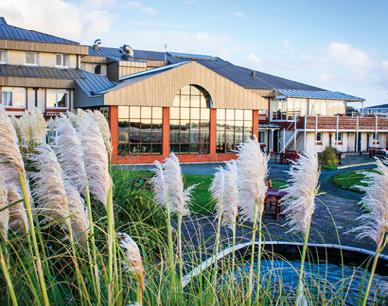
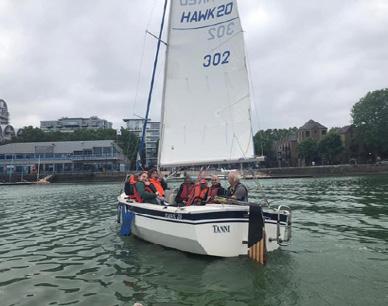
Looking to embark on a new adventure? Find your job opportunity of a lifetime at www.bas.ac.uk/jobs To learn more about Revitalise, visit our call our friendly booking advisors on 0303 303 0145 or visit revitalise.org.uk *Not to be combined with any other offer. Please contact us for full booking terms and conditions. Registered charity number: 295072 Revitalising holidays for disabled people and carers. Fully accessible, fully fun. for readers of Disability Review* 10% off quote DR225 With 60 years’ experience, we are the experts in creating a fun, relaxing and accessible holiday experience with the reassurance of care. With exciting excursions, live entertainment and fullboard hospitality, this is the break you need and the holiday you deserve. Jubilee Lodge Sandpipers Sailing excursion 76 DRM MAGAZINE | Winter 2022 CLASSIFIED disabilityreviewmagazine.co.uk

















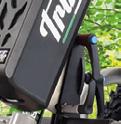
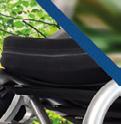





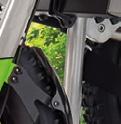












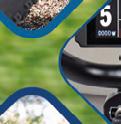








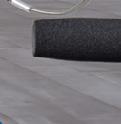










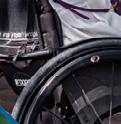


















































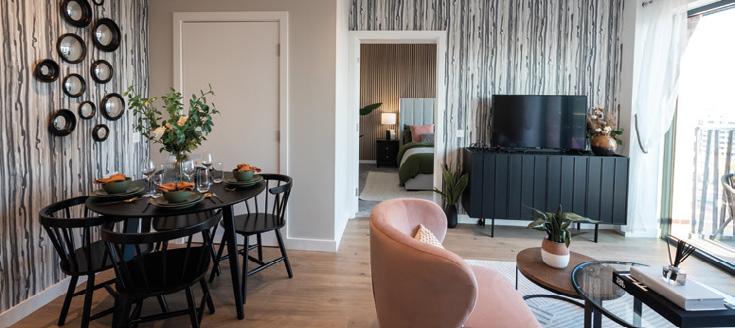

FREEDOM Intelligent Braking System Intelligent Cruise Control Motion Direct Control 77 Winter 2022 | DRM MAGAZINE CLASSIFIED disabilityreviewmagazine.co.uk
Brian Barr Solicitors represented a former health care assistant and m who twisted her ankle when she tripped over an unmarked and unlit tragically ended up with a below knee amputation With an eventual Complex Regional Pain Syndrome (CRPS) she also suffered from fatig constipation and fibromyalgia, all of which resulted in a major depress
Mid claim a significant interim payment was obtained to allow for the and renovation of a home suitable for her condition followed by a fin settlement of £4million which will assist allowing her to live the best alongside her condition


Brian Barr Solicitors helped to secure £4million in compensation for

 CRPS Chronic Pain and Fibromyalgia can be life changing Which is w Solicitors work tirelessly to secure our clients the compensation they
CRPS Chronic Pain and Fibromyalgia can be life changing Which is w Solicitors work tirelessly to secure our clients the compensation they
To start your claim get in touch: call us on 0161 737 9248 Are you suffering following an accident? 78 DRM MAGAZINE | Winter 2022 CLASSIFIED disabilityreviewmagazine.co.uk
Specialist Fibromyalgia, CRPS, Chronic Pain & Critical Illness Lawyers
Stiltz Homelifts


Inclusive living as standard
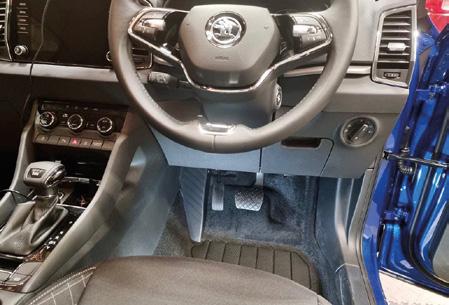
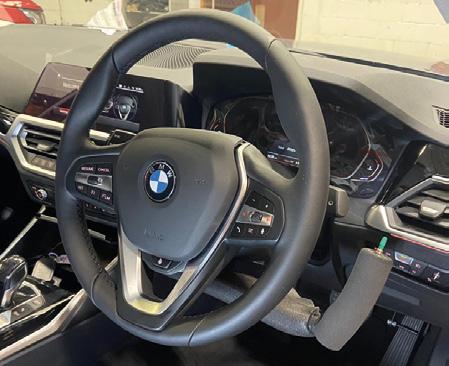
Moving between floors safely and with dignity shouldn’t be an optional extra. Inclusive living is now available at the push of a button with the beautifully-designed, wheelchair-accessible, Stiltz Trio+ Homelift.

Full, no obligation, nationwide consultations





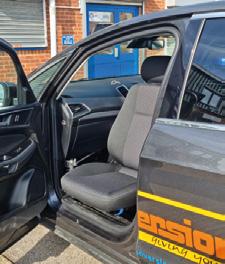


available. For free brochure pack or information: Call 0808 239 3029, Email info@stiltz.co.uk or visit www.stiltz.co.uk
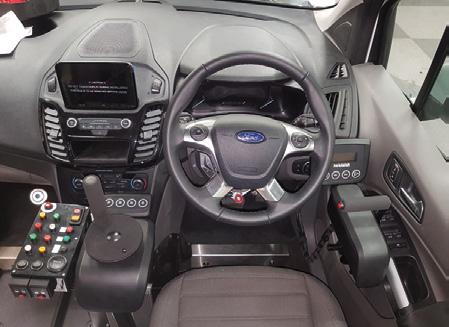

To view our current vacancies, please go to www.lifeworks uk.org/vacancies or scan the QR code using

For more information, email us on jobs@lifeworks uk.org or call us on 01803 840744.

Rated ‘Excellent’
Do you have a background in supporting young people or adults with learning disabilities to live their best life?
We have a number of fantastic roles across all levels at Lifeworks Charity, from Support Workers to Team Leaders in Dartington or Torquay. We are a well established charity that provides an excellent range of benefits
your mobile camera
“ ” Specialists in vehicle adaptations for people with disabilities PB Conversions 1&2 Clipstone Brook Ind Est., Cherrycourt Way, Leighton Buzzard LU7 4GP t. 01525 850588 • e. pbconversions@aol.com Call for friendly service and Free advice on: 01525 850588 www.pbconversions.co.uk Hand controls Drive from the wheelchair Hoists On site service available FREE advice 3 Year warranty on PBC products Over 25 years’ experience Left foot accelerators Radio remote systems Annual service reminders We Have Demo Vehicles PB Conversions A5_Portrait.indd 1 14/05/2021 17:23 79 Winter 2022 | DRM MAGAZINE CLASSIFIED D R M To advertise, please call 01959 543 650 disabilityreviewmagazine.co.uk


TOYOTA C-HR ICON SELF-CHARGING HYBRID £1,695 ADVANCE PAYMENT* *Model shown is C-HR Hybrid Icon (MY21) 1.8 VVT-i Auto at £1,695 Advance Payment. Subject to availability. Available as part of the Motability Contract Hire Scheme. Please note that a total of 60,000 miles over three years are allowed on the Motability Contract Hire Scheme. Offer valid between 1st October 2022 and 31st December 2022. Motability Scheme vehicles are leased to customers by Motability Operations Limited (Registered Company No.1373876), City Gate House, 22 Southwark Bridge Road, London, SE1 9HB. To qualify you must be in receipt of the Higher Rate Mobility Component of Disability Living Allowance (DLA), the Enhanced Rate Mobility Component of Personal Independence Payment (PIP), the War Pensioners’ Mobility Supplement (WPMS) or the Armed Forces Independence Payment (AFIP) and applications must be made with participating dealers between 1st October 2022 and 31st December 2022. Prices are correct at time of print, are subject to availability and may change. Official fuel consumption figures in mpg (1/100kkm): combined 53.3 (5.3) to 57.65 (4.9). Combined CO₂, 110 - 120 g/km. Figures are intended for comparability purposes; only compare fuel consumption and CO₂, figures with other cars tested to the same technical procedures. The fuel consumption and CO₂ produced under real life driving conditions will depend on a number of factors including the accessories fitted (post-registration), driving style, speed and vehicle load. All vehicles are certified according to the World Harmonised Light Vehicle Test Procedure (WLTP). CO₂ figures (and hence car tax and recommended ‘on the road’ prices) may differ from information printed before 1st April 2022, due to a change in the official method of calculation. Please visit www.vehicle-certification-agency.gov.uk/fcb/wltp.asp or contact your local Toyota Centre for more information. Smartphone Integration incl. Apple CarPlay and Android Auto Reversing Camera Pre-Collision Safety System with Pedestrian and Cyclist Detection Automatic High Beam Headlights




































 Kirandeep with her book reading aid
Kirandeep with her book reading aid
























































































































































































































































































































































 CRPS Chronic Pain and Fibromyalgia can be life changing Which is w Solicitors work tirelessly to secure our clients the compensation they
CRPS Chronic Pain and Fibromyalgia can be life changing Which is w Solicitors work tirelessly to secure our clients the compensation they















